Live animal imports suspended along Southern Border
On May 11, U.S. Secretary of Agriculture Brooke Rollins announced live cattle, horse and bison imports would be suspended imme-

On May 11, U.S. Secretary of Agriculture Brooke Rollins announced live cattle, horse and bison imports would be suspended imme-
In the 22nd snow report for Water Year 2025, the state’s snowpack telemetry data reads 66% of median, with a basin high of 83% and a basin low of 36%. Last year, the state was at 106% and at 111% in 2023. The report and a map displaying basin snow water equivalent percentages of median for the state may be found at wrds.uwyo.edu/ wrds/nrcs/nrcs.html
The Platte County Groundwater Control Area Advisory Board will meet on May 19 at 2 p.m. in the Board of Control Field Office in Wheatland to discuss and offer recommendations to the state engineer on Board of Control petitions and groundwater applications. The meeting will also be accessible via Google Meet for those who wish to attend remotely. For additional information, contact Ryan Cox at 307-777-5063 or ryan.cox1@wyo.gov.
The Wyoming Quarter Horse Association (WQHA) will host the 2025 Cowboy Summer Classic July 9-13 at the Pepsi Equine Center on the Wyoming State Fairgrounds in Douglas, featuring five days of Quarter Horse and all breed classes and clinics, in addition to a $1,000 jackpot. For more information, visit wqha.org
Hay stocks on Wyoming farms and ranches as of May 1 totaled 390,000 tons, a decrease of 24% from stocks of 515,000 tons on hand last year, according to the May 1 Agricultural Yield Survey conducted by the U.S. Department of Agriculture National Agricultural Statistics Service’s Mountain Regional Field Office. Hay production for 2024 totaled 1.95 million tons, 23% lower than production in 2023. Disappearance from Dec. 1, 2024 to May 1 was 910,000 tons, compared with 975,000 tons during the same period a year earlier.
diately at U.S. ports of entry along the Southern Border due to the continued, rapid spread of New World screwworm (NWS).
“I am announcing the suspension of live cattle, horse and bison imports through U.S. Southern Border ports of entry effec-
tive immediately,” Rollins states. “The last time this devastating pest invaded America, it took 30 years
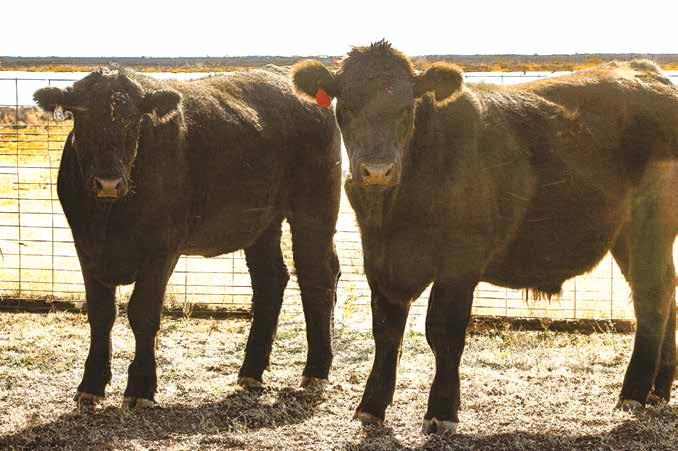
With an upward trend in temperatures and a few early holidays to kick of the summer grilling season, May has been deemed National Beef Month in the U.S.
Seemingly in response, cattle and beef markets have been celebrating with new record highs for the past couple of weeks.
On April 15, the ProRodeo Hall of Fame named three Professional Rodeo Cowboys Association (PRCA) World Champions to its Class of 2025 inductees including TieDown Roper Stran Smith, Team Roping Header Steve Purcella and Bareback Rider Jeff Collins.
According to a ProRodeo Hall of Fame and Museum of the American Cowboy press release, the three are joined by multiple National Finals Rodeo (NFR) qualifiers and fellow contestants, including notable Saddle Bronc Rider Tom Miller, a three-time NFR average champion and six-time NFR qualifier who took a unique approach to success in pro rodeo.
“I think this whole rodeo deal is a mental game,” Miller states. “I had someone tell me, ‘You ride every horse for what he is. Don’t under ride him and don’t over ride him, and everything will come out okay.’ It was good advice. Just go have fun.”
Miller was a constant championship contender in the arena. In 1979, he lost a world championship by a mere $5.28 to Bobby Berger, which was the second closest world championship race in PRCA history, behind Scott Snedecor’s 2005 Steer Roping World Championship by $1.67 over Rock Patterson.
Miller went into the 1979 NFR trailing season leader Monte Henson and second-place finisher Berger, but Miller placed in seven of the 10 rounds and won the average by 19 points, making the world championship race one to remember. Miller continued his successful career finishing second
Live cattle futures are record high According to Trader PhD Ag Marketing Head of Market Content Dawson Schmitt and University of Mississippi Associate Professor Josh Maples, fed cash cattle prices began surging at the beginning of the month to a

ASI takes action for American wool through new Wool Action Plan
Based on an industry analysis by Market Solutions LLC conducted in 2024 and presented at the 2025 American Sheep Industry Association (ASI) Annual Convention, the Wool Council asked association staff to develop a plan to spur growth and development within the American wool industry.
The new Wool Action Plan identifies five key areas which need to be addressed, as well as ways in which ASI and the industry can go about implementing changes and improvements in these areas.
Current situation
Of the average annual American wool clip, 60 percent is exported internationally – with China continuing to serve as the industry’s largest market. Another 15 percent is used in clothing, blankets and other items for the U.S. military, while 19 percent is used by domestic commercial mills and six percent is processed by domestic small mills.
U.S. textile manufacturing has changed dramatically since the 1990s, when much of the commercial textile industry moved to international destinations. Domestic manufacturing has always been important to the American wool industry, which
On May 1, the U.S. Department of Agriculture’s Natural Resources Conservation Service (NRCS) published the May 2025 Wyoming Basin and Water Supply Outlook Report, which analyzes snowpack, precipitation, streamflow and reservoir storage across the state of Wyoming.
As growers start to rely on water supply for the 2025 growing season, the report assesses the water supply outlook for the entire state of Wyoming, as well as individual basins including the Snake River, Madison Headwaters, Yellowstone River, Wind River, Big Horn River, Shoshone River, Powder River, Tongue River, Belle Fourche River, Cheyenne River, Upper North Platte River, Lower North
Platte River, Laramie River, Sweetwater River, South Platte River, Little Snake River, Upper Green River, Lower Green River and Upper Bear River basins. Snowpack and precipitation
According to NRCS, snow water equivalent (SWE) across the state of Wyoming was 72 percent of median as of May 1.
The highest SWE was reported in the Tongue River Basin at 112 percent of median, and the lowest SWE was reported in the Belle Fourche River Basin at zero percent of median.
The report also shows the Belle Fourche River, Cheyenne River, Laramie

It’s grilling season now, and American ranchers and feeders offer some great beef and lamb products to enhance grilling season.
As you can tell, I like to brag about American beef and lamb. I can assure you, their increased quality is not by chance.
Better management practices and technology, along with genetics, are just some of the reasons consumers want more lamb and are still buying beef at record-high prices at the meat counter and at restaurants.
With beef and lamb, it all starts with seedstock producers, the people who raise breeding bulls and rams.
Cattle seedstock producers have improved genetics since the 1970-80s and have developed artificial insemination to a proven science now. I sure wouldn’t call it modifying cattle, it’s just working together to provide a beef product consumers want.
While cattle numbers are at record lows, beef carcass weights are at record highs, which is compensating for some of the low numbers. This technological advancement in producing cattle has allowed beef producers and feeders to produce more beef per head.
The real proof comes in the grading of beef carcasses, which has also vastly improved.
Beef is evaluated by highly-skilled U.S. Department of Agriculture (USDA) meat graders.
Besides assuring a healthy, hormone- and antibiotic-free carcass, USDA meat graders use a subjective characteristic assessment process and electronic instruments to measure meat characteristics. These characteristics follow the official grade standards developed, maintained and interpreted by USDA’s Agricultural Marketing Service.
According to the USDA, beef is graded in two ways – quality grades for tenderness, juiciness and flavor and yield grades for the amount of useable lean meat on the carcass.
The grades for higher cuts of beef are Prime, Choice and Select – cuts one would find in the meat counter.
The standard and commercial grades of beef are frequently sold as ungraded or as store brand meat. Utility, Cutter and Canner grades of beef are seldom, if ever, sold at retail, but are sold instead as ground beef, as some stew meat and processed beef products such as hot dogs, etc.
Prime beef is produced from younger, well-fed beef cattle. It has abundant marbling – the amount of fat interspersed with lean meat – and is generally sold in restaurants and hotels or used for dry-heat cooking such as broiling, roasting and grilling.
Choice beef is high quality, but has less marbling than Prime. Choice roasts and steaks from the loin will be tender, juicy and flavorful and are suited for dry-heat cooking, you just have to be careful not to overcook it.
Select beef is very uniform in quality and normally leaner than higher grades. It is fairly tender, but because it has less marbling, it may lack some of the juiciness and flavor of highergrading products. It should be marinated before cooking or braised to obtain maximum tenderness and flavor.
To prove the industryʼs improvement, in 1998 Choice carcasses were about 50 to 55 percent Choice. Today it is around 75 percent of carcasses, and recently, with heavier fed cattle, there are more Prime carcasses than Select. That, my friends, is success.

By Mike Limberhand
Small businesses are the backbone of our nation’s economy, especially in rural America, creating jobs, supporting growth and providing vital tax revenue to support a range of critical services.
However, rural smallbusiness owners like me need greater clarity and stability when it comes to our tax code to help ensure our businesses’ long-term success and to enable us to continue investing in ourselves and our communities.
This is especially true now, as several key components of the 2017 Tax Cuts and Jobs Act (TCJA) passed during the first Trump administration are set to expire at the end of the year,
while others already need to be restored.
Lawmakers in Washington, D.C. must work quickly to extend these tax cuts and help ensure rural small businesses and Main Street job creators nationwide have the tax certainty they need and deserve.
Included in the 2017 tax law was a 100 percent bonus depreciation tax credit for equipment and machinery and 100 percent research and development tax credit in the year the expense occurred. Both of these provisions were immensely helpful to businesses, but sadly, they have been phased down and will expire at the end of 2025.
There was also the pop-
ular 20 percent small business deduction and the reduction of the corporate income tax rate from 35 percent to 21 percent.
These deductions have given smaller, mom-andpop businesses the flexibility needed to reinvest in growing their operations, opening new locations, creating more local jobs and contributing to stronger local economies.
Renewing and extending these important tax provisions will help protect and build on the gains small businesses have seen since passage of the TCJA.
In fact, a report by the National Federation of Independent Business (NFIB) found permanently extend-
ing the 20 percent small business deduction would enable small businesses to create an estimated 1.2 million new jobs each year over the next decade and 2.4 million jobs annually in the years after.
Extension of this deduction would also contribute hundreds of billions of dollars to the U.S. economy. Keeping the corporate tax rate at its permanent 21 percent level while restoring bonus depreciation would also be a powerhouse to the U.S. economy.
Conversely, failing to extend the small business deduction would amount to a massive tax hike for nine in 10 small businesses, Please see TAX CUTS on page 8
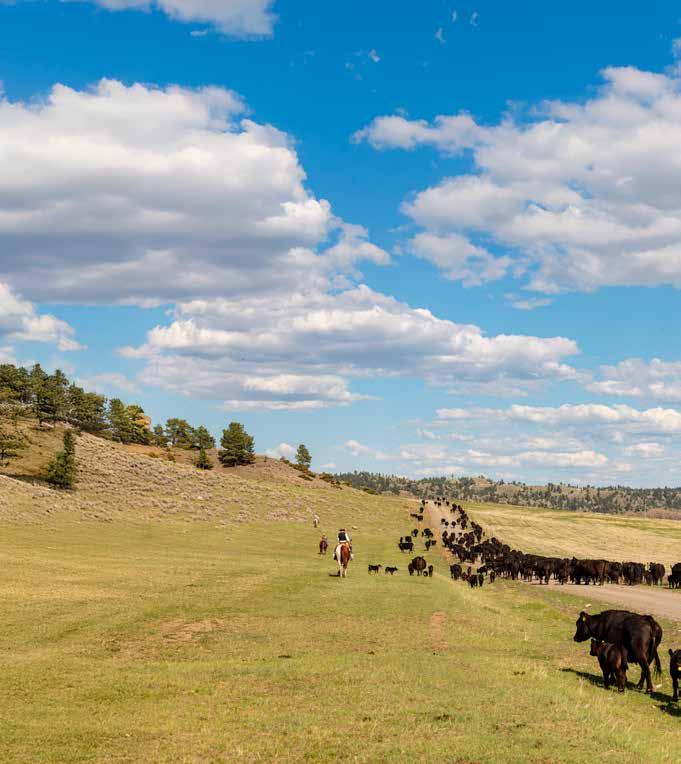
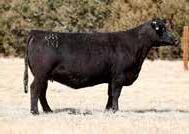
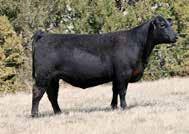
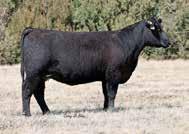
Production Coordinator • candice@wylr.net
JODY MICHELENA, Advertising Director • jodym@wylr.net
OLSON, Classified Sales Manager • 307-685-8213 • denise@wylr.net ANDREA ZINK,
605-695-1990 • calli@wylr.net

The Wyoming Department of Revenue reminds homeowners in Wyoming they may qualify for a partial refund of 2024 property taxes paid. The property tax relief program for homeowners has an application deadline of June 2.
Wyoming Department of Revenue Director Brenda Henson explained Wyoming residents for the last five years may qualify for a refund if they have occupied the property for nine or more months in 2024; have total assets less than $163,019 per adult household member, excluding the value of their home, one vehicle per adult member of the household and any retirement accounts, life insurance or medical saving accounts from this calculation and if the homeowner’s 2024 property tax paid exceeds 10 percent of their total household gross income, the asset requirement is waived.
In addition, household income must not exceed 145 percent of the median household income for the county where the property is located or the statewide median, whichever is larger. For all but 10 counties this amount is $109,881.
Counties with higher income limits are Campbell County at $133,139; Converse County at $115,754; Crook County at $112,897; Laramie County at $111,331; Lincoln County at $129,529; Sublette County at $116,841; Sweetwater County at $111,650; Teton County at $192,459; Uinta County at $117,856 and Weston County at $111,447.
Homeowners can apply for a refund of up to one-half of the median residential property tax amount or 75 percent of their 2024 property tax bill, whichever is less.
Taxpayers may apply online at wptrs.wyo.gov or obtain an application from a local County Treasurer’s Office across the state.
All applications must be properly completed and filed with the Department of Revenue or the County Treasurer’s Office no later than June 2.
Before applying for the refund, individuals must pay their 2024 taxes in full.
For more information, call 307-777-7320 or visit wptrs. wyo.gov/
The Bureau of Land Management’s (BLM) Rawlins Field Office is partnering with the Xerces Society to host a free public workshop focused on pollinator conservation through the Mountain States Bumblebee Atlas.
The event will take place on June 8 from 1-4 p.m. at the BLM Rawlins Field Office.
The event will begin with an intro to bumblebees and identification and conservation efforts, followed by a guided field outing to where participants will get hands-on practice of the Mountain States Bumblebee Atlas protocol at a field site.
This community science initiative helps biologists – professionals and citizens alike – better understand native bumblebee populations and their habitats throughout the region.
The event is free and open to the public. No prior experience is necessary. Anyone with an interest in bees and a desire to contribute to conservation in a hands-on way is encouraged to attend.
Participants will learn how to identify bumblebees, use simple field tools and submit observations to a regional database used by scientists and land managers.
The Cattlemen’s Beef Board (CBB) invites all eligible beef industry organizations to submit funding requests for programs and projects for the upcoming Fiscal Year 2026, which begins Oct. 1.
Requests must be in the form of an authorization request (AR). Multiple program areas are eligible for funding.
Organizations must submit a first-round draft of an AR to the CBB by June 2. During the 2025 Cattle Industry Summer Business Meeting in San Diego, Calif., held July 7-9, organizations will have the opportunity to present their specific plans and funding requests to various Beef Checkoff Program Committees.
This valuable process allows producers and importers to provide input on checkoff-funded programs, build programs free of redundancy and achieve strategies outlined in the Beef Industry Long Range Plan.
The number of Beef Checkoff contracting organizations changes from year to year, as does the available amount of funding, which is based on the annual checkoff collection.
As an example, for current Fiscal Year 2025, the Beef Promotion Operating Committee (BPOC) approved eight contractors to conduct Beef Checkoff work.
Qualified organizations interested in submitting a request can contact Sara Arp, CBB senior director of operations, by May 19 at 303-220-9890 or sarp@beefboard.org.
The deadline for a first-draft AR is June 2. Final-draft ARs must be received by July 21 to be considered by the BPOC.
In the early morning hours of May 5, Rich, Debbie, Guy and Anna Edwards of Wright lost a huge 60’x200’ barn, along with a historic family flock of sheep they were preparing to lamb.
Guy and Anna were housing their 170-head flock at Rich and Debbie’s ranch for the lambing season, and the 1940’s barn and sheep were totally lost in a devastating fire.
At the request of many friends and fellow shepherds, a bank account has been set up to support the Edwards family as they try to replace pieces of their heritage. Those wishing to help can contact First National Bank of Gillette to make a donation under the Edwards Family Relief Fund.
Donations can also be mailed to First National Bank of Gillette, PO Box 3002, Gillette, WY 82717-3002.
Farmers would see an expanded safety net under a package of provisions recently released by the House Agriculture Committee.
The committee began debating a bill to boost the farmer safety net, crop insurance and support for trade programs, while also tightening eligibility for nutrition programs and shifting some costs to states.
Under the plan, farmers would see better reference prices, a broader band of protection levels under commodity and insurance programs and the payment limit for farm programs increased.
The budget reconciliation package laid out by House Agriculture Committee Chairman Glenn “GT” Thompson (R-PA) essentially addresses the lion’s share of a farm bill package by dealing with the commodity title, nutrition, crop insurance, trade and research titles, while leaving out sections such as conservation, forestry and rural development.
The package, put together by Thompson, is projected to cut $290 billion out of the costs of the Supplemental Nutrition Assistance Program (SNAP) over 10 years while increasing the farmer safety net, crop insurance and trade programs by roughly $60 billion over the next decade.
The package will be included in the “The One Big, Beautiful Bill” Republicans are putting together to extend and expand on the 2017 tax cuts while also cutting spending by rolling back programs such as SNAP and Medicaid.
House Ag Committee members will soon meet, at which every lawmaker of the 52-member committee will get a chance to make an opening statement on the package. The committee is expected to pick up where it left off with a markup, member amendments and potential vote.
Trout Unlimited released a new film, titled “Horses and Highwater: Restoring Tincup Creek,” which documents the restoration of the Salt River Watershed and the people who made the project come to life.
Located in northwest Wyoming and southeast Idaho, the Salt is a blue-ribbon fishery for native Snake River cutthroat trout and wild brown trout. However, its health has been compromised by degraded and fragmented fish habitat, rapid development in riparian areas, impaired water quality and dewatering.
Featured in the film are two Tincup Creek stream restoration projects, both of which aimed to reconnect sections of Tincup Creek to its floodplain.
The film focuses on the North Fork Tincup Creek ProcessBased Restoration Project, completed in 2024. This project used teams of draft horses and Wyoming Conservation Corps crews to install log structures in the creek to capture cobble and sediment mobilized during runoff and raise the elevation of the streambed to improve floodplain connectivity.
Elevating the stream will reconnect it to its floodplain to improve stream function, reduce erosion and improve habitat conditions. These efforts will enhance riparian conditions and habitat for Yellowstone cutthroat trout, northern leatherside chub, boreal toad, western pearl shell mussels and bluehead suckers – all of which are native species with special management emphasis.
The film also pays homage to the first major Trout Unlimited and Caribou-Targhee National Forest restoration project on Tincup Creek, completed in 2019, which fully restored five miles of Tincup along the dirt road section of the creek.
On May 8, the National Cattlemen’s Beef Association (NCBA) announced support for President Donald J. Trump’s trade agreement-in-principle with the United Kingdom (UK). Most importantly, the agreement includes market access for beef.
This announcement follows years of NCBA’s hard work building the foundation for a trade deal with the UK, including numerous meetings with British industry stakeholders; Members of Parliament; the British Embassy; the UK Department for Environment, Food and Rural Affairs and other top British authorities.
“With this trade deal, Trump has delivered a tremendous win for American family farmers and ranchers,” said NCBA President Buck Wehrbein, a Nebraska cattleman. “For years, American cattle producers have seen the UK as an ideal partner for trade. Between our countries’ shared history, culture and desire for high-quality American beef, securing a trade agreement is a natural step forward. Thank you President Trump for fighting for American cattle producers.”



By Amy Smith, UW Extension Educator


Springtime brings long lists of work to do, whether it is lambing, calving, branding, working on machinery or getting fields ready to plant.
For many, planting new trees is another task on the annual list. This might mean replacing dead trees found in tree windbreaks, planting new windbreaks or just planting a tree in the yard. Regardless of the location and purpose, planting seedling trees can be a challenge.
Before planting seedling trees, take a close look at where the trees will be planted. Will there be enough
space for the trees as they grow to maturity in 10, 20 or 50 years? Are there any buildings, structures or power lines which need to be considered?
Once the location is determined, what type of tree should be planted? It’s important to research which tree species are best suited for the area.
A good starting point is to observe what types of trees are growing naturally in the surrounding area and select similar species. Exotic species or species which are not native to the area may not
survive or may have a shortened lifespan.
If evergreens are to be planted, some varieties may require protection to prevent sun scalding. Evergreen needles are very tender as seedlings, and care should be taken to protect them from the sun’s heat and from direct contact with the wind.
Taking these precautionary steps in the beginning often saves time and money in the future, especially if the trees die and need to be replaced.
The following steps can help increase the survival rates of seedling trees. Choose the right location
Whether selecting a new location to plant trees or filling in an established tree row, choosing the correct location is key to seedling success. Most trees need full sun, meaning six or more hours per day.
In a newly established tree windbreak, the young seedling trees receive equal


sunlight distribution, allowing for maximum growth potential.
However, if the seedlings are used to fill gaps in an established tree row, full sun may be harder to obtain, as the canopy of the established trees will most likely shade the new seedlings and reduce their growth rate. Care should be taken to choose replacement tree varieties that may tolerate more shade.
Soil type should also be considered. Wyoming soil varies widely across the state and within counties. To determine the soil type in any given area, a soil test is recommended. Soil tests provide information on nutrient availability, pH, organic material, saline content, texture and more.
Although all of the information provided is important, soil texture plays an important role when planting seedling trees. Well-drained soil that is not compacted is preferable. If the soil contains high levels of clay or silt, care should be taken to provide seedling trees with enough room for their roots to spread out.
The mature size of the tree should be taken into consideration when choosing a planting location. Trees should not be planted within 15 feet of buildings, more than three feet from pavement and no less than 15 feet from other trees. Mature trees which will grow over 30 feet tall should be planted more than 25 feet from wires.
Once the planting location has been selected, make sure to check for any town, municipality or Home Owners Association regulations regarding landscape ordi-
nances. It is required by law to call the underground utility locating service in an area at least two business days before planting to be sure there are no buried utilities under the location selected for planting.
To access this service, call 811 or 800-849-2476. Most services will mark utility lines for free.
Prepare the seedling
The best time to handle seedling trees is when they are still in dormancy, meaning they do not have buds or leaves yet. Depending on the time of year, planting seedlings while they are dormant may not always be possible.
However, it is vitally important to plant them as soon as possible to provide the best chance of survival.
One of the most important rules is to keep the roots of the seedling trees moist. This can be accomplished by soaking bare root seedings in water for one to two hours before planting.
Regardless of whether the seedlings are bare root or come in a container, they should be kept in a shady, cool area until they are ready to be planted.
Seedlings should be handled with care to prevent damaging young trees. Note it is easy to damage the delicate roots of the seedlings when separating bare root stock.
Dig the hole
A good rule of thumb is to dig a hole the depth of the seedling’s root system, allowing all of the roots to extend fully without bending and at least twice as wide as the root width when spread out.
Digging the proper hole size reduces the likelihood of bound roots or circling roots, which can girdle and eventually kill the tree.
Plant the seedling
Place the seedling in the hole as upright as possible, making sure to keep the root collar – the area where the stem meets the roots – at or slightly above ground level.
If the seedling has bare roots, gently spread the roots out as described above. If the seedling is from planted stock, gently rough up the soil surrounding the roots, releasing any which may be bound up and make sure there are no roots growing in a circle to prevent future girdling.
Next, gently cover all of the roots with firmly packed soil to eliminate air pockets. If planting a bare root seedling, fill the hole halfway, gently hand pack the soil, then completely fill and gently hand pack again.
Make sure to avoid mixing in any organic matter, such as twigs, leaves, needles and branches, as this can affect water drainage and create air pockets, which will dry out the seedling’s roots, potentially killing the seedling.
Water well
Once the seedling is planted, water deeply, applying water to the entire planting area to encourage root growth development.
Fill any holes created by soil settling with additional
soil. Take care not to pack the wet soil.
Care of seedling
During the seedling’s first year, provide water every two to four days.
The ideal watering frequency depends on the type of soil present. Soil with more clay will retain water longer and therefore will not need to be watered as often, whereas soil with more sand will need water more often.
When possible, consistent irrigation for the first one to five years significantly improves the establishment and initial growth of the seedlings.
Water requirements vary depending on drainage and weather conditions as well as soil type. Ideally, the seedlings should have six to 12 inches of moist soil. However, if water availability is limited, the seedlings can survive on natural precipitation, although the death loss may be higher.
Fertilizer is not recommended during the first year of growth as it may limit root growth. Fertilizer application after the first year should be based on soil test results.
Placing a layer of mulch around the base of the seedling reduces soil moisture loss. Mulching the seedling will also discourage weed growth and reduce competition for water and nutrients. If animal damage is a concern, placing a barrier around the seedling or seedlings may provide protection.
Common strategies include placing wire mesh or a plastic tube around the seedling, placing hexagonal wire mesh along the bottom of a six- to eight-feet-high fence to keep rabbits and deer from entering the area or using fine screen to keep plant-loving insects such as grasshoppers off of the seedlings.
Pruning may be introduced, if necessary, after three years. Any devices used to prune the trees should be sharp. To reduce the introduction or spread of disease, pruning instruments such as shears or saws should be disinfected after every cut by dipping the instruments in a vinegar and water solution or a chlorine bleach and water solution.
Resources
Many Wyoming natural resource districts offer an opportunity to order and purchase bare root seedling trees in the spring. Note most seedling trees come in bundles, most often 25 seedling trees to a bundle.
Available species may vary from district to district. For more information on purchasing bareroot seedling trees, contact a local natural resources district.
The University of Wyoming (UW) offers many publications on successfully planting and growing trees in Wyoming. For more information, contact a local UW Extension educator or visit barnyardsandbackyards.com
Amy Smith is a University of Wyoming Agriculture and Natural Resources Extension educator. She can be reached at asmit207@uwyo.edu.
Sept. 30, 1936 – May 4, 2025
William Harley Cushman, age 88, was at home when he left this world to go to Heaven on May 4.
of Colorado’s first pioneer settlers before it was established as a state.
Harley’s lifelong passion was being a cowboy. He lived the life many dreamed of, riding broncs and bulls, roping, training and trading horses and cattle. He quickly made friends in the local community, in the sale barn and anywhere he went.
Colo. on Nov. 18, 1956. They shared 69 memorable years together, ranching and raising their five children to love the Western lifestyle.
Harley served as a volunteer fireman for 25 years with the Hygiene, Colo. department.
The Cushman and Gould families were some
Harley was born in Longmont, Colo. on Sept. 30, 1936 to Lewis “Bud” and Amy Cushman, as one of five brothers and one sister. The family lived a wonderful and adventurous life on the farm and in the high country of Boulder County, Colorado.
June 10, 1935 – April 24, 2025
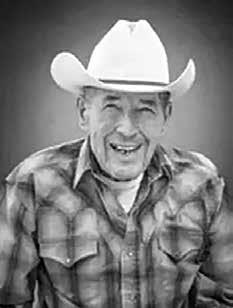
While all-purpose flour has long been a staple in baking, ancient grains are experiencing a modern resurgence in both commercial and home kitchens.
The ancient grains market is expected to grow by $50 million by 2028 as grains like spelt, einkorn and buckwheat grow in popularity, according to a March 25 Food Manufacturing article by Jere Cassidy.
“These grains are replacing white flour for their taste, health benefits and sustainability,” she writes.
What are they?
Grain has been an essential ingredient in baking for thousands of years across various cultures.
All-purpose flour, derived from wheat, serves as the foundation for many breads, pastries and desserts in America and Europe.
However, over the past decade, ancient grains such as buckwheat, amaranth, teff and Kamut have seen a significant resurgence in baking recipes.
As defined by the Whole Grains Council (WGC), ancient grains are those which have not been changed through breeding.
While wheat has been consistently bred to create more resistant and productive crops, ancient grains are the same today as they were hundreds of years ago, resulting in grains which are packed with flavor, texture and nutrients.
The market
According to Cassidy, many of these grains have been popular in non-Western cultures, but teff has been grown in the mountains of present-day Ethiopia, where it is a key ingre-
passed away peacefully at the family homestead on April 24 with family at his side.
Sam loved school and graduated from Worland High School in 1954. He was a member of the football team, FFA and Boys State.
In 1955, Sam married the love of his life, Phyllis Hefenieder. Together they raised four children – Dan, Janna, Steve and Justin – all of whom, along with their families, continue to operate the family cattle ranch.
Sam spent his life
He married Dolores Ann Gingery in Lyons,
ranching sheep and cattle, proudly continuing the Hampton family tradition established in 1911 in Washakie County. He considered both the homestead in Worland and the ranch in Ten Sleep as home.
Sam loved driving a team to feed livestock by wagon in the early years while helping his father.
The Wyoming Centennial Wagon Train renewed his passion as a teamster. He was committed to preserving this heritage, leading wagon train adventures with friends and neighbors from 1990 until 2009.
Sam lived by a simple yet powerful belief,
Harley is preceded in death by his parents and brothers Lewis, Walt, Charles and Johnny Cushman.
“To have good neighbors, you must first be one.” His strength, generous spirit and unwavering dedication to his family, community and way of life left an indelible mark on all who knew him.
Sam was inducted into the Wyoming Cowboy Hall of Fame in 2024. Though honored, he wanted to be remembered as a sheepman. He referred to himself as “the ol’ sheepherder.”
Sam was a member of the Wyoming Wool Growers Association, the Wyoming Stock Growers Association, the Elk’s Club and the Lion’s Club.
Sam was preceded in death by his father Carl
He is survived by his wife Dolores; sister Margaret (Don) Smith; children Dan (Barbara) Cushman, Steven (Debbie) Cushman, Dawn (Marlin) Godfrey, Janette (Greg) Starck and Della (Bryan) Gibbons, as well as his 16 grandchildren, 22 great-grandchildren and one great-greatgrandson.
Graveside services were held at the Jireh Cemetery on May 11.
Hampton; mother Wanda Hampton; second mother Louise Hampton; siblings Carla Mae Macartney, Charles Hampton, Paul Willis, Henrietta Kophs, Bonnie Jean Eckhardt and LaMonda Treick; son-inlaw Jack Cabre and granddaughter Joslyn Cabre.
Sam is survived by Phyllis, his loving wife of 70 blessed years; sister Jacque (Joe) Harrod; sons Dan (Brenda) Hampton, Steve (Kathleen) Hampton and Justin (Kaeli) Hampton; daughter Janna (Clint) Hampton Branger; grandchildren Jamy Cabre, Andrea (RC) Carter, Jake Branger, Carl Hamp-
dient in flatbread injera, while sorghum flour is a common ingredient in Indian roti or susu bukkumi cakes in Korea.
“Flours from these whole grains are also gaining popularity in American baking,” she adds.
Food Business News reports the U.S. ancient grains market will grow from $90.4 million in 2022 to $142.3 million by 2028, a nearly eight percent growth year-over-year.
However, the all-purpose flour industry is only expected to grow by about three percent per year, according to a recent research study.
“Consumers are increasingly seeking healthier organic and non-genetically-modified varieties of all-purpose flour as they opt for more nutritious and sustainable baking options,” Cassidy writes.
“The shift to ancient grains reflects broader food and baking trends, but curiosity about innovative flavors, healthier options and eco-friendly choices have significantly increased the popularity of ancient grains, even with their higher cost,” Cassidy continues.
Flavor and nutrients
The predictable, neutral taste of all-purpose flour is a large part of what has made it so useful in baking, as it lets other flavors shine.
Whereas, ancient grains offer more complex flavors and, depending on the way they are milled, a distinct texture which can enhance baked goods.
Cassidy mentions amaranth and teff have an earthy flavor, while Kamut is buttery and sorghum is slightly sweet. Spelt and buckwheat

ton, Alec Hampton, Reed Hampton, Allison Hampton, Nyah and Ness Campbell and great-grandchildren Cameron, Will and Tru Carter.
A celebration of life was held on May 6 at the Zion Lutheran Church. In lieu of flowers, the family asks donations be made to the Yellowstone Boys and Girls Ranch, Zion Lutheran Church, the Joslyn Cabre Memorial Scholarship Fund or a charity of the donor’s choice. Checks may be sent to PO Box 524, Worland, WY 82401. Online condolences may be made at bryantfuneralhomeonline.com
flour can bring extra tenderness to baked goods in small amounts or make them drier in large quantities.
Consumer awareness is shifting towards more wholesome and nutrientdense ingredients, and in their 2024 State of Healthy Eating and Wellness Report, 62 percent of millennials and Gen Z’ers are willing to sacrifice spending on fashion for healthy food, while 55 percent would sacrifice tech spending to eat healthier.
“Ancient grains deliver when it comes to health,” she notes. “Whole grains and ancient grains have more protein, fiber, vitamins, minerals and antioxidants than refined all-pur-
pose flours, and substituting ancient grain flours can help manage weight and reduce the risk of heart disease, diabetes and stroke.”
Some ancient grains are naturally gluten-free. Buckwheat, amaranth, teff and sorghum contain no gluten, making them excellent gluten-free flours for those with celiac or gluten intolerance.
Farming
Ancient grains are more sustainable, requiring less water, fertilizer and pesticides, and grains like millet can grow well in harsh conditions and extreme climates.
In 2018, the University of Wyoming (UW) conducted a project to develop






a new niche agricultural market for the state by producing first grains.
As a result of the project, the Neolithic brand was founded as a research and economic development project by Tom Foulke, a research scientist in the UW College of Agriculture, Life Sciences and Natural Resources.
The goal of Neolithic is to create jobs and enhance income in Wyoming’s agricultural sector by adding diversity to cropping choices available to farmers by essentially creating a vertically-oriented niche industry for these grains from the farm, through processing to developing markets.
Today, the organization




sells spelt, emmer wheat and Ethiopian blue emmer in either bulk, super sacks or 50-pound bags.
Another local ancient grain grower is Wyoming Heritage Grains, located in the state’s northwest corner, only 70 miles from Yellowstone National Park.
Wyoming Heritage Grains has been family owned and operated since 1946, according to their website, and is focused on regenerative practices specializing in heirloom and heritage wheats, barleys and ryes.
Melissa Anderson is the editor of the Wyoming Livestock Roundup. Send comments on this article to roundup@wylr.net.














River, Little Snake River, Lower Green River, Lower North Platte River, Madison Headwaters, Powder River, South Platte River, Upper Bear River, Upper Green River and Yellowstone River basins were below 90 percent of the median SWE recorded from 1991 to 2020.
Additionally, the report notes the Tongue River Basin saw the highest precipitation over the past month at 126 percent of median, while the Laramie River Basin saw the lowest amount at 45 percent of median.
Streamflow yields
NRCS expects median
for our cattle industry to recover. This cannot happen again.”
Rollins says suspension will be in effect on a monthby-month basis.
Eradication efforts
Since the first case of NWS was detected in Mexico in November 2024, the U.S. Department of Agriculture (USDA), under Rollins’ guidance, has been leading the charge on efforts to eradicate the pest and keep it from crossing the U.S. border.
streamflow yields in all Wyoming basins – except the Cheyenne, Little Snake, Lower Green and Upper Green – to average 89 percent from May through September.
Streamflow yields for these four exceptions are expected to average 42 percent, 63 percent, 84 percent and 97 percent, respectively, from April through July.
Expected streamflow yields for individual basins across the state include the Lower North Platte River Basin at 56 percent of median, the Powder River Basin at 78 percent of median, the Upper
According to a May 11 USDA press release, these efforts include a threepronged approach, including active field surveillance, education and outreach to ensure prevention, treatment and early detection; controlling animal movement to limit spread and utilizing sustained sterile insect dispersal. Despite these efforts, data from USDA’s Animal and Plant Health Inspection Service indicates there have been over 1,400 NWS
North Platte River Basin at 78 percent of median and both the Tongue and Laramie river basins at 88 percent of median.
NRCS predicts streamflow yields for the Snake River Basin, Shoshone River Basin, Yellowstone River Basin, Big Horn River Basin, Wind River Basin and Sweetwater River Basin will respectively report 97, 98, 100, 101, 102 and 112 percent of median.
Reservoir storage
For the entire state of Wyoming, NRCS reports average reservoir storage at 94 percent of median, down from 98 percent the month prior.
Reservoirs reporting numbers below median
detections across Mexico as of May 9, with active cases in Chiapas, Tabasco and as far north as Oaxaca and Veracruz, which are only about 700 miles away from the U.S. border and serve as a major cattle movement corridor.
“Suspending livestock transport through southern ports of entry will assist in the effort to limit northbound transport of NWS through livestock commerce and will allow the U.S. to reassess whether current mitigation standards remain sufficient,” reads the USDA news brief. “It is important to note the
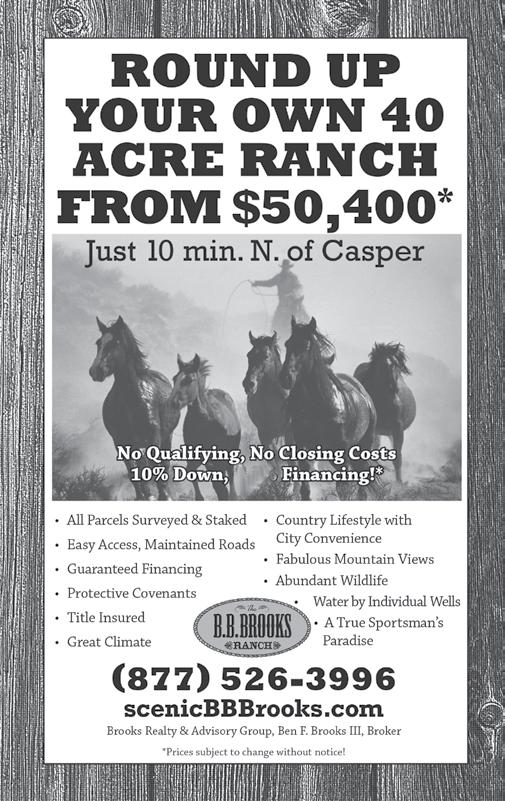
included those in the Cheyenne River Basin at 83 percent, the Belle Fourche River Basin at 85 percent, the Wind River Basin at 87 percent, the Lower North Platte River Basin at 90 percent and the Upper North Platte River Basin at 92 percent.
The Buffalo Bill Reservoir on the Shoshone, as well as the Lower Green River and the Big Horn River basin reservoirs reported numbers near median – 97 percent, 101 percent and 103 percent, respectively.
Reservoirs on the Snake River and Upper Green River were above median, posting numbers at 112 percent and 113 percent, respectively.
northward spread of NWS is possible through natural wildlife movements, including wildlife which transit the border region without impediment.”
Rollins comments, “Mexico Secretary of Agriculture Julio Antonio Berdegué Sacristan and I have worked closely on the NWS response. However, it is my duty to take all steps within my control to protect the livestock industry in the U.S. from this devastating pest. The protection of our animals and safety of our nation’s food supply is a national security issue of the utmost importance. Once we see increased surveillance and eradication efforts – and the positive results of those actions – we remain committed to opening the border for livestock trade.”
“This is not about politics or punishment of Mex
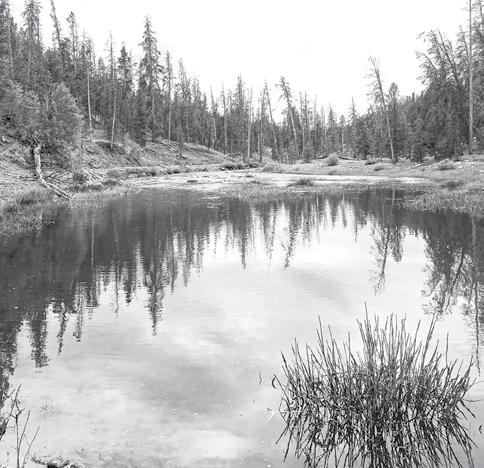
Tick Riders – employees who patrol the Texas-Mexico border on horseback – to observe livestock and wildlife along the Southern Border, especially between ports of entry, to monitor for the presence of NWS.
Industry response
Tensions have run high between the two countries since eradication efforts began, and Rollins’ latest announcement comes just weeks after the U.S. and Mexico reached an agreement on aircraft restrictions and customs duties needed to aid in these efforts.
This time around, Berdegué rebuked Rollins’ action to close ports and says he hopes the two countries will soon come to another agreement.
Closer to home, several U.S. ag groups have praised the USDA’s recent action.
U.S. Cattlemen’s Asso
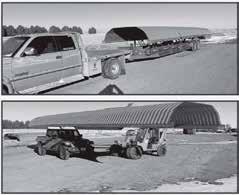
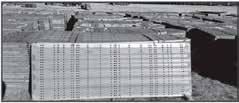
the urgent threat posed by the NWS and making the hard decision to halt animal movement across the Southern Border. Closing the border to Mexico will protect the U.S. beef supply and U.S. producers from NWS. This is an issue that was resolved in the 1970s after the parasite caused severe and lasting damage to America’s cattle herd. Its reemergence is a very serious issue with potentially catastrophic consequences if left unchecked.”
He continues, “We must remain vigilant. The lessons of the past, combined with today’s cutting-edge surveillance and eradication tools, give us the best possible chance to halt this outbreak. USCA will continue to work hand-in-hand with USDA, state veterinarians and our neighbors in Mexico to eradicate NWS once again and

has struggled dramatically with the loss of manufacturing capacity. But with 40 percent of American wool staying in the U.S., opportunity exists to grow the domestic side of the industry, and this is where the Wool Action Plan will focus its energy.
While the industry has plenty of producers growing American wool around the country, there are only two first-stage processors in Chargeurs and Bollman Industries.
As the wool moves through the supply chain, there are more options for spinning and eventually manufacturing.
It’s critical first-stage processors – which are the gateway into manufacturing – are efficient and produce high-quality products while also having plenty of raw wool to keep their facilities and staffs busy.
The analysis identified several areas of opportunity for American wool in the domestic market.
These include the athleisure and outdoor apparel markets; taking advantage of the demand for locallysourced, natural fibers; developing yarns for export and more.
Action plan
ASI staff identified five key areas to focus on in the
Wool Action Plan. These areas are improving wool quality, assisting first-stage processors, increasing demand through promotion and education, supporting small- and midsize mills and exploring a traceability program.
Improving wool quality takes the top spot because the way to increase domestic use of American wool is to produce high-quality wool companies want to buy. This includes reducing the average micron, reducing vegetable matter and increasing yield.
There’s quite a bit of variety in the American wool clip, so the industry needs to establish a baseline and then work with the ASI Production, Education and Research Council and it’s Genetic Stakeholders Committee to collaborate efforts.
ASI will also develop educational tools such as webinars, brochures and social media posts. ASI will revitalize the quality improvement program and ensure testing innovations are available to allow producers to truly understand the quality of the wool they are growing.
As previously mentioned, first-stage processing is a key component in these efforts.
Many producers remem-
ber when Superwash was introduced to the American wool industry in 2011 like it was yesterday. In fact, it spurred the development of several American-made wool sock lines. But Superwash is more than a decade old now, and technology has evolved.
The Wool Action Plan calls for continued investment in first-stage processors. ASI will help these processors explore funding sources and grant opportunities while bringing in professionals from around the world to provide technical assistance as they look to expand their capacity and efficiency.
The third point in the Wool Action Plan calls for increasing demand through promotion and education.
The industry needs to educate consumers about the wonderful qualities of fine American wool and to convince them the added cost of buying American wool products – from underwear to outerwear and everything in between – is worth the price of admission.
There’s a reason people who often spend time in extreme conditions –whether it’s cold or hot –have come to realize the value of wool products. There’s a reason the U.S. military uses American wool in everything from cold weather gear to combat and dress uniforms.





ASI will continue consumer outreach, as well as develop additional resources to market American wool domestically while drawing on its experience in marketing this allnatural fiber to overseas manufacturers.
There’s been a resurgence of small- and medium-size mills in the U.S. in recent years as customers gravitate toward locally-sourced and locallymade products.
The fourth point of the Wool Action Plan calls for ASI to provide additional support to these mills. As is the case with the firststage processors, many of them need access to additional funding so they can increase efficiency and capacity.
These mills provide an avenue for American wool producers with smaller flocks to get their wool through the manufacturing process, whether they just want to develop a farm-specific yarn line or have their wool processed into consumer products.
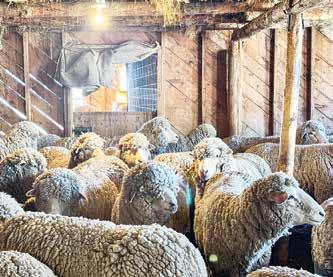
supporting local economies with their purchase.
Providing American wool to the military is also important for the military and for wool usage.
“To successfully integrate additional programs, we will need to carefully evaluate our current priorities,” ASI Wool Marketing Director Rita Samuelson wrote in a letter to Wool Council members. “This may involve strategically changing programs and – in some cases – reassessing or scaling back lower-priority initiatives to make room for the new ones. Our goal is to optimize our efforts without compromising the quality and success of new and ongoing projects.”
unforeseen challenges – it also presents opportunities for growth and innovation,” she continued. “By staying realistic about our capacity and leveraging our strengths, we are confident in our ability to drive meaningful progress. This plan positions us to move forward with intention. We’re doing all of this with the end goal of creating a strong, resilient American sheep and wool industry now and into the future.”


And finally, the Wool Action Plan calls for exploring traceability options within the industry. Consumers who are willing to pay higher costs for natural fibers over synthetics often want to know where those fibers are coming from, how they were produced and that they are

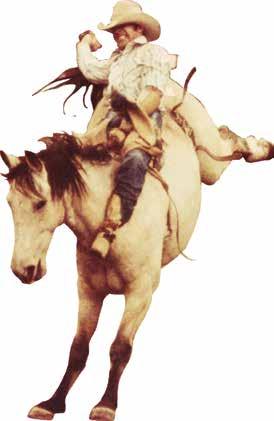




“Although this is a transitional year – with the complexities of a farm bill year, uncertain funding and
ASI is the national organization representing the interests of sheep producers located throughout the U.S. From east to west, pasturebased flocks to range operations, ASI works to represent the interests of all producers. This article was originally published in the May edition of ASI’s Sheep Industry News

in the 1975 world standings and serving as PRCA judge for more than 20 years. He was part of the PRCA Rules Committee for four years, served two years on the PRCA Humane Committee and was an NFR judge for five years.
Additional champions
Joining Miller is Smith, a 10-time NFR qualifier and 2008 NFR average winner.
“I was just trying to win enough to keep justifying going to rodeos,” Smith states. “Then I was fortunate enough to make the finals and eventually win a world championship. This probably means more than anything because it really didn’t have a lot to do with me. This is something the people on the outside and inside selected.”
According to the Pro-
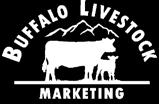
Rodeo Hall of Fame, Smith faced numerous obstacles along the way. He came back from a stroke in 2003, missed the gold buckle by $1,778 in 2004 and lost his prized horse Topper in an accident in 2007.
However, he seized the moment in round 10 of the 2008 NFR and finished second with a 7.2-second run on his mare Destiny, giving him his best run of the rodeo by six tenths of a second and allowing him to clinch the average and the world championship.
Another national champion being honored is Purcella who qualified for the NFR 12 times and won the NFR average in 1996.
“It’s quite a surprise. I heard a couple of years ago somebody had nominated me,” Purcella says. “But I didn’t ever think it would
happen. I don’t know what to think about it yet. It’s pretty cool.”
In 1996, Purcella partnered with Steve Northcott and won the PRCA Team Roping Header World Championship and tied for the NFR Average Champion with Northcott.
Purcella had signature rodeo wins including 14 NFR qualifications, and he was a three-time Reno Rodeo champion, a Cheyenne Frontier Days champion and a Rodeo Houston champion.
Also being honored is Collins, a six-time NFR qualifier who won the 2000 NFR average title with a then-record of 816 points on 10 head.
“There are so many guys who are so deserving – amazing athletes and cowboys who have done so
Austin Snook • 307-290-2161
Taylor Snook • 307-290-2273
Craig Deveraux • 307-746-5690
Dan Catlin • 406-671-7715
Clint Snook • 307-290-4000
Cheyenne Seymour • 605-641-0638
much for the sport that it’s just so humbling,” Collins states. “I’ve seen so many greats go in there, and just to be mentioned with those people is amazing.”
Collins accomplishments include winning the 1993 Dodge National Circuit Finals Rodeo, the 1999 and 2000 Reno Rodeo Championship and the 1998 and 2000 California Rodeo Salinas Championship.
More honorees
Purcella and Collins are joined in the class by innovative Rodeo Producer Mack Altizer, owner of Bad Company Rodeo stock contracting firm.
“From the very start, we saw this was a hit, and it always pushed us to get bigger and better,” Altizer says.
Altizer was a pioneer in the rodeo world, revitalizing bull riding almost singlehandedly and introducing high-energy and mod-
Kyle Kallhoff • 605-881-1526
Casey Sellers • 307-217-2614
Jim Forbes • 307-351-5932
Tye Curuchet • 307-351-8666
Daniel Escoz • 307-217-1440
Kade Kinghorn • 307-620-0525
"From the ring, to the video, and in the country, we market your livestock the competitive way."
Weigh ups and bred market full steady. Thank you and we appreciate your business!
5
3
3
3
3
5
3
2
1
BLK-COW 1387 150.00 WT 2,080.00 CLEAR BENT BARS INC., LEITER WY 1 RED-COW 1315 156.50 WT 2,057.97 MERLIN RANCH INC, BUFFALO WY 1 BLK-HFRTTE 1035 193.00
1450 149.00 WT 2,160.50 WILLIAM R. LONG FAMILY TRUST, BUFFALO WY 1 BLK-HFRTTE 960 229.00 WT 2,198.40 BAKER LIVESTOCK LLC, BIG HORN WY 1 BLK-COW 1220
ern marketing techniques into rodeo events beginning in the early 1980s. Today, no rodeo is without rock-and-roll music excitement, lighting and highenergy announcing during the bull riding.
According to the ProRodeo Hall of Fame press release, Altizer was all about the fan experience, and back then he saw traditional rodeos in need of more “show business.” He was known for pushing for higher payouts for performing cowboy contestants.
The 2025 class also includes the late Harley Tucker, a past Northwest rodeo producer and stock contractor from Joseph, Ore., who helped found Chief Joseph Days in 1946 in St. Joseph, Ore.
“At the time of his death in 1960 at the age of 52, he was one of the nation’s largest stock contractors, providing stock and producing over 25 rodeos in the Northwest each year,” reads the press release.
Tucker was also inducted into the National Cowboy Hall of Fame in Oklahoma City in 1997, the St. Paul Rodeo Hall of Fame in 1999 and the Pendleton Round-Up Hall of Fame in 1980.
Other inductees include Skipper Voss, the 1982 Wrangler world champion bullfighter, who also worked the NFR in 1974 and 1978. Voss’ techniques and style in the arena have carried over into the bullfighters of today.
The list continues
RTR Little Willy earned a spot in the 2025 ProRodeo Hall of Fame as a timed-event horse.
Considered one of the greatest steer wrestling horses, RTR Little Willy guided Rope Myers in 2001, Lee Graves in 2005,
Jason Miller in 2007 and Luke Branquinho in 2008 to world championships and was the 2008 PRCA American Quarter Horse Association Horse of the Year.
Rounding out the 2025 inductees are the rodeo committee from Livermore, Calif.; Barrel Racer Joyce (Burk) Loomis Kernek, the 1970 Women’s Professional Rodeo Association (WPRA) World Champion and WPRA notable Pam Minick, the 1982 WPRA Breakaway Roping World Champion and rodeo and Western-lifestyle television personality.
Additionally, the secretary of Livermore Rodeo, Colby Staysa will be inducted this summer.
Kernek made headlines throughout the 1970 season, beginning the season ranked number one and ending the season in the same spot, all aboard a horse named War Leo Dude.
Minick was a 16-time qualifier for the WPRA World Finals where she also competed in team roping and was the first woman to be granted a PRCA announcer card.
The 2025 Ken Stemler Pioneer Award, which recognizes those who have provided groundbreaking, innovative ideas and forward thinking to help the development, advancement and success of the PRCA and or the Hall of Fame and their missions is being awarded to Red Steagall.
The ProRodeo Hall of Fame Class of 2025 Induction Ceremony will be held on July 12 in Colorado Springs, Colo. Melissa Anderson is the editor of the Wyoming Livestock Roundup. Send comments on this article to roundup@wylr.net.
according to NFIB. Without it, the top federal tax rate will increase to over 43 percent for 26 million small businesses nationwide.
This would make it harder for rural small businesses to compete – both with larger companies in the U.S. and with foreign competitors – and stay afloat in these uncertain economic times.
As lawmakers work to extend key tax cuts and deductions, they must also help ensure rural small businesses, particularly those working in the agriculture or manufacturing industries, can immediately expense their investments in research and development and equipment.
Being able to do so helps support innovation and ensures rural farmers and farming businesses which use heavy machinery can invest in new equipment to improve efficiency and productivity, enhance workplace safety and reduce their costs and operating expenses.
The TCJA helped lower the tax burden for tens of millions of small businesses, many of them operating in rural communities. Retaining a competitive tax code, including the small business deduction, immediate research and development and equipment expensing and a low corporate tax rate, is critical for rural and Main Street small businesses like mine.
Rural small businesses have survived years of inflation, economic turbulence, supply chain disruptions and tightening margins. Now is not the time for lawmakers to push us off a fiscal cliff by massively raising taxes.
Congress needs to pass legislation to extend the 2017 tax cuts and reforms to help provide some much-needed greater certainty and confidence for small business owners in Montana and across the country.
Mike Limberhand is the policy chair for the Rural and Agriculture Council of America and a small business owner. This opinion column was originally published by AgriPulse on May 9.
The closure of 25 U.S. Geological Survey (USGS) Water Science Centers will have outsize impacts on rural Western communities which rely on accurate information about water, flooding and drought conditions.
Earlier this month, the Trump administration moved to shutter USGS facilities as part of their cost-cutting maneuvers. The decision to close 25 water science centers appears to have been made based solely on the termination dates of their building leases.
Six of the 25 centers are located in Oklahoma, Texas, Utah, Washington and Wyoming and are responsible for water information in eight Western states.
According to a USGS employee who spoke to On Land with the condition of anonymity, these closures will have big impacts on the quality of water information and the accuracy of emergency preparedness.
“There’s a lot of intricacy and complexity with what we do, and closures like these make the job more difficult,” the USGS official said.
On May 9, the National Cattlemen’s Beef Association (NCBA) submitted comments to the U.S. Food and Drug Administration (FDA) urging the agency to toughen up guidance for fake meat companies to prevent them from using misleading labels on plant-based products.
NCBA’s comments urge FDA to address misleading advertising on plant-based
USGS works with landowners, non-governmental organizations and other partners to monitor, assess, research and provide information to water users about streamflow, groundwater, water quality and water use and availability across the U.S.
USGS is the largest provider of in situ water information in the world, including streamflow and salinity monitoring. It has spent the last several years updating the technology to supply real-time data and seasonal predictions of water availability across the U.S.
Accurate water information
These data streams are particularly important for Western water users who rely on accurate water information to make fundamental decisions about their land.
The closure of field offices like the one in Moab, Utah, will particularly complicate stream gauge maintenance, which On Land has covered previously.
Instead of responding quickly to a sudden change brought about by a flood
or other rapidly-moving event, technicians will now have to drive the three and a half hours from Salt Lake City to get to Moab before heading out into the remote areas where stream gauges take their measurements. This change will harm flood preparedness in the city of Moab.
“The gauges upstream of town are a really big deal during the monsoon season. They can give warnings and valuable time if a big slug of water comes down that could threaten the town,” the USGS official said.
The gauge measurements can provide up to 30 minutes of warning for local emergency services and residents, a particularly salient piece of information considering the town has flooded multiple times in the past few years.
USGS recently installed a new gauge on the North Fork of Mill Creek to help predict those floods, and if it or another key gauge goes down, it could spell trouble.
With longer travel times to reach the more remote measuring stations, it could
take days to get the instrument back up and running. And, in this time, another flood could strike Moab and producers without adequate warning.
Agricultural impacts
“In addition to providing critical warnings for weather-related emergencies like flooding and drought, stream gauge data is vital for agricultural water users to administer irrigation water,” said Western Landowners Alliance Western Water Program Director Morgan Wagoner.
These concerns are very real for folks like Pedro Marques, the executive director of the Big Hole Watershed Committee (BHWC).
The Big Hole River is the most gauged stream in Montana and supports agricultural producers, ranchers and a booming recreation industry reliant on accurate data to determine best uses for the water in the system.
The BHWC, established in 1995, is a poster child for collective community action to share the burden of sometimes diffi-
cult conservation decisions.
“One of the great successes of the Big Hole’s collaborative conservation was to make sure we have accurate, real-time stream gauge monitoring. How can you manage water if you don’t know how much you have?” Marques said.
The model of collective sacrifice to make the Big Hole’s water work for all stakeholders requires precise data on the amount of water in the river and temperature of the water. If a stream gauge or monitoring device goes down, it could have ripple effects all across the Big Hole Valley.
There are not enough bodies to measure every single headgate in the Big Hole, and well-maintained infrastructure makes the system work predictably. Predictability is what producers need to make their life working on the land sustainable, and good data offers this predictability, Marques said.
This in turn lets the BHWC make collective, optimal decisions about water use while bringing stakeholders together.
fake meat foods.
While plant-based fake meat has been on the market for several years, sales have tumbled as consumers balk at ultra-processed food. Although the final guidance for industry is nonbinding, closing loopholes which allow plantbased companies to use terms like “beef” and imagery like the outline of a cow are important first steps
that benefit real farmers and ranchers.
Additional guidance or rulemaking actions may follow in the coming months.
“Cattle producers work hard every day to raise wholesome, high-quality and nutritious real beef. We’ve spent decades building a strong reputation with consumers, and we will not give up on it without a fight. Companies selling fake
meat should not be allowed to use misleading advertising or trade on beef’s good name,” said NCBA President and Nebraska Cattleman Buck Wehrbein. “If you’re manufacturing products to replace beef that contain no real beef, you should not be using terms specific to livestock, especially legally-defined terms like ‘meat.’”
“Likewise, you should

While there has not yet been any sign the Big Hole gauge network is in danger of losing funding, Marques said if the system were to go down, it could lead to a domino effect of negative impacts across the valley.
“If we get down to this model of everybody for themselves, we’re going to end up with senior right holders at the mouth of tributaries with all of the power and all the rights,” Marques said. “Even medium-sized producers will get calls on their water any time we get into a drought situation. This creates a level of unpredictability, and it would make it very difficult for operators to keep working and living on this landscape.”
Thomas Plank is Western Landowners Alliance’s (WLA) communications coordinator for Colorado River Basin water issues. A former local newspaper journalist in Montana and Idaho, Plank’s career has been focused on providing support and value to local communities. This article was originally published in WLA’s newsletter On Land on May 9.
not be permitted to utilize pictures of cattle, real beef or farmers and ranchers in your labeling,” added Wehrbein. “The federal government’s draft guidance
for the fake meat industry has not gone far enough to prevent companies from attempting to trick the public into buying fake meat products.”

May 19 Platte County Groundwater Control Area Advisory Board Meeting, 2 p.m., Board of Control Field Office, Wheatland. For more information, contact Ryan Cox at 307-777-5063 or ryan.cox1@wyo.gov.
May 20 Montana Wild and Domestic Sheep Commingling Project Public Meeting 12-1 p.m., 4-H Building, Beaverhead County Fairgrounds, Dillon, Mont. For more information, visit animalrangeextension.montana.edu/wildlife/index.html
May 20 Montana Wild and Domestic Sheep Commingling Project Public Meeting, 5:30-6 p.m., Jeffers Building, Madison County Fairgrounds, Twin Bridges, Mont. For more information, visit animalrangeextension.montana.edu/wildlife/ index.html
May 20-21 Low-Tech Process-Based Restoration In-Person Workshop, 8:30-11:30 a.m., Weston County. For more information or to register, visit westoncountynrd.org/ltpbr-workshop/
May 22 Lincoln County Suicide Prevention Town Hall, 10 a.m.-12 p.m., South Lincoln Training and Events Center, Kemmerer. For more information or to register, visit prospertogether.net/suicide-prevention-town-hall
May 25 21st Annual Hyattville Cowboy Carnival, Hyattville Community Center, Hyattville. For more information, visit hyattville.org
May 26 Wyoming Livestock Roundup Office Closed in Observance of Memorial Day. Wishing all of our readers a very safe and happy holiday.
May 29 Montana Wild and Domestic Sheep Commingling Project Public Meeting 5:30-6 p.m., Emigrant Community Hall, Emigrant, Mont. For more information, visit animalrangeextension.montana.edu/wildlife/index.html
May 31-June 1 Colorado Breed Bash, Morgan County Fairgrounds, Brush, Colo. For more information, visit facebook.com/ColoradoBreedBash
June 1 Wyoming Agriculture Hall of Fame Nominations Due. For more information, contact the Wyoming Livestock Roundup at 307-234-2700.
June 2 Natrona County Predator Management District 2025 Budget and Board Meeting, 6 p.m., Wyoming Wool Growers Office, Casper. For more information, e-mail ncpmd1@charter.net.
June 2-4 Wyoming Stock Growers Association Summer Cattle Industry Convention and Trade Show, Laramie. For more information and to register, visit wysga.org
June 3-4 Tractor and Equipment Training Course, Legacy of the Plains Museum, Gering, Neb. For more information or to register, visit go.unmc.edu/tractorsafety-training
June 5 Tractor and Equipment Safety Course, Dawes County Fairgrounds, Chadron, Neb. For more information or to register, visit go.unmc.edu/tractor-safetytraining
June 6-7 37th Annual Overland Stage Stampede Rodeo, 7 p.m., Green River. For more information, call 307-872-0514.
June 7 Albany County Firewise Education Event, 9 a.m.-3p.m., Boulder Ridge, Laramie. For more information or to RSVP, visit eventbrite.com/e/Albanycounty-firewise-education-event-tickets-1245451983409?aff=oddtdtcreator
June 7 Up In Arms LLC Flea Market and Gun Show, 9 a.m.– 5 p.m., Hot Springs County Fairgrounds, Thermopolis. For more information, call 208-420-2295.
June 8 Up In Arms LLC Flea Market and Gun Show, 9 a.m.– 3 p.m., Hot Springs County Fairgrounds, Thermopolis. For more information, call 208-420-2295.
June 8 Bureau of Land Management Rawlins Field Office and Xerces Society Free Public Bumblebee Workshop, 1-4 p.m., Bureau of Land Management Rawlins Field Office, Rawlins. For more information, visit xerces.org/events/ wyoming-bumble-bee-atlas-short-training-workshop-rawlins-wy
June 9-12 Beef Leaders Institute, Saint Joseph, Mo. For more information, visit angus. org/angus-media/angus-journal/2025/01/bli-apps-open
June 9-13 Wyoming Ranch Camp, Ladder Ranch, Savery. For more information, visit wyoextension.org/fremontcounty/agriculture-natural-resources/ranch-camp/
June 12-15 Art of the Cowgirl Foundation Wyoming Gathering 2025, TA Ranch, Buffalo. For more information or to register, visit artofthecowgirl.com or e-mail savanna@artofthecowgirl.com.
June 13-15 7 Triangle 7 Artificial Insemination Spring Training, Akron, Colo. For more information or to register, visit 7triangle7.com or call 307-481-3921.

1 Blk Cow, 1320# $15000 Leigh Creek LLC - Ten Sleep 1 Blk Cow, 1365# $15050 Lake, Jerry - Thermopolis
2 Blk Cows, avg. 1250# $14950 Hopkin Livestock - Lovell
1 Blk Cow, 1575# $14800 Leigh Creek LLC - Ten Sleep
1 BWF Cow, 1425# $14750 Starbuck Ranch LLC - Ten Sleep
1 Blk Cow, 1465# $14700 1 Blk Cow, 1610# $14600 Johnson, Jerry - Thermopolis
1 Blk Cow, 1305# $14550 Wiechmann, Douglas - Ten Sleep
1 Blk Cow, 1415# $14550 Mendez Brothers - Otto
1 Blk Cow, 1330# $14500 Doyle Ranch Inc. - Hyattville
1 Hrfd Cow, 1310# $14400 Good, Robert - Greybull
2 BWF Cows, avg. 1470# $14400 Neves, Lyle - Burlington
1 Red Cow, 1105# $14200
Lazy B V Cattle - Meeteetse
May 24
May 30-31
June 16-21
June 17-19
July 1
July 7-11
July 7-13
July 11-12
July 14-16
July 24
16th Annual Full House Horse Sale, Weston County Fairgrounds, Newcastle, 307-746-5690, 307-746-8592, 307-746-8536, fullhousehorsesale.com
Leachman Cattle – Hobble Diamond Ranch Partnership Dispersal, Leachman Cattle’s New $Profit Center, Meriden, 970-568-3983, leachman.com
2025 National Rambouillet Sheep Show and Sale, CAM-PLEX, Gillette, 409-256-3687, rambouilletsheep.org
Superior Livestock Auction Corn Belt Classic, 800-422-2117, superiorlivestock.com
Cattle Country Video High Plains Showcase Sale, UW Marian H. Rochelle Gateway Center, Laramie, 888-322-8853, cattlecountryvideo.com
Superior Livestock Auction Week in the Rockies, 800-422-2117, superiorlivestock.com
Colorado Horse Sale Saddle Horse Sale, online at coloradohorsesale.com, 970-744-8989
Mile High Summer Classic Sale, Adams County Regional Park, Brighton, Colo., 970-381-3649, 970-381-3547, joshwhiteauctions.com
Western Video Market, Silver Legacy Casino Resort, Reno, Nev., 530-3473793, wvmcattle.com
Stellpflug Cattle Company “New Frontier” Female Sale, at the ranch, Guernsey, 307-351-1712, stellpflugcattle.com
July 28-Aug 1 Superior Livestock Auction Video Royale, 800-422-2117, superiorlivestock.com
Aug. 12-13
Aug. 18-19
Aug. 18-22
Aug. 23
Aug. 23
Aug. 23-26
Cattle Country Video Oregon Trail Classic Sale, Gering Civic Center, Gering, Neb., 888-322-8853, cattlecountryvideo.com
Western Video Market, Little America, Cheyenne, 530-347-3793, wvmcattle.com
Superior Livestock Auction Big Horn Classic, 800-422-2117, superiorlivestock.com
Memory Ranches Third Annual Foal Sale, at the ranch, Wells, Nev., 208412-6156, 208-695-0399, memoryranches.com
Colorado Horse Sale, Adams County Fairgrounds, Brighton, Colo., 970-7448989, coloradohorsesale.com
Lauing Mill Iron L Ranch 20th Annual QH Production Sale, online auction only, prohorseservices.com, 605-347-6193, 605-280-0698, 605-280-0398, lauingmillironlranch.com
Aug. 30 Proffit Ranch 24th Annual Labor Day Horse Sale, Diamond X Barn, Evanston, 307-723-5857, proffitranch.blogspot.com
Aug. 30
1 Blk Cow, 1570# $15350 1 Blk Cow, 1405# $14850 1 Blk Cow, 1390# $14700 Greybull River Land - Meeteetse
1 Blk Cow, 1220# $14000 Zeller Ranch - Meeteetse
1 BWF Cow, 1365# $14000 Dooley Livestock LLC - Worland
1 Blk Cow, 1605# $15300 Hoggs Black Diamond Cattle - Meeteetse
1 BWF Cow, 1310# $15250 Weber, Larry - Powell
2 Blk Cows, avg. 1540# $15250
E Spear LLC - Riverton
1 Blk Cow, 1135# $15050
1 Blk Cow, 1430# $12900 HEIFERS Lake, Jerry - Thermopolis
1 Blk Hfr, 1140# $21500 E Spear LLC - Riverton
1 Blk Hfr 1035# $11500
HEIFERETTES
Martinez, Scott - Evansville
1 Blk Hfrette, 805# $25500 Hamilton Ranch, Inc. - Hyattville
1 Blk Hfrette, 975# $23300
Lungren, Luke - Worland
1 Blk Hfrette, 1030# $22300
1 Blk Hfrette, 1205# $19850 PAIRS Hopkin Livestock - Lovell
3 Blk Pairs $3800/Hd. Greybull River Land - Meeteetse
7 Blk Pairs $3450/Hd. McNeff Double Bar C - Thermopolis
5 Blk Pairs $2700/Hd.
• Upcoming Sales •
May 22 – All Class Cattle
May 29 – All Class Cattle
June 12 – All Class Cattle
June 26 – All Class Cattle, Sheep & Goat
July 10 – All Class Cattle
July 24 – All Class Cattle, Sheep & Goat
August 7 – All Class Cattle
August 21 – All Class Cattle, Sheep & Goat
Huskerland Horse Sale Extravaganza, Burwell Livestock Market, Burwell, Neb., 308-383-0039, dvauction.com


Cows broke from pasture during the Battle of Gettysburg and reached place of safety
We had an old cow that had been in the family for years, and the morning of the first day of the fight we had put her in pasture as usual. This pasture was near the edge of town.
Of course, we saw nothing of her during the three days of fighting.
Often, one of us would say, “I wonder what has become of the old cow?”
The general opinion was we had seen the last of her.
On the morning of the fourth day, my father, brother and I took a walk over the field to see if we could find any trace of her. We saw many terrible sights. Dead soldiers were lying around thick, dead horses and many cow skins and heads.
From this last, we soon came to the conclusion our cow had been killed for food like the rest, so we gave her up.
As we were eating supper one evening a week or more after the battle, we heard a familiar bellowing in the street. Everybody sprang from the table and rushed out. There stood our dear old cow, looking at us happy as it is possible for a cow to look at being home again.
Next day, we discovered she had a bullet hole in her neck and one in her side. She was not severely hurt, however, and both bullets came out eventually.
We found out later all of the cows in that particular field had got out in some way the first day of the fight and had wandered off about 10 miles from town, beyond the firing line. After the battle, they all found their way back to town. –Albertus McCreary, in McClure’s.
This week’s Postcard from the Past was ripped from the pages of the May 24, 1917 issue of the Newcastle News Journal
Mothers of the Armies
The mothers of the armies, in churchyards old they sleep,
no more to wake and worry, no more to watch and weep; for rust has spiked the cannon, and choked the bugle’s throat, and hushed o’er hill and valley the drum’s defiant note!
They sent them forth to battle, from many a cottage door, the sons they loved and cherished and feared to see no more; they sat by lonely hearthstones, and waited, sick with dread, to welcome the crippled, or mourn the hero dead.
And when with fragrant blossoms we deck the blue and gray, oh, twine a dewy garland upon Memorial Day –a tribute to the mothers who each with bleeding breast, gave freely to her country her dearest and her best.
– Minna Irving

Source: USDA AMS Livestock, Poultry & Grain Market News,
Source: USDA AMS Livestock, Poultry & Grain Market News, Greeley, CO
National Sheep Summary As of May 9, 2025
Compared to last week slaughter lambs traded firm, Slaughter ewes mostly firm. Feeder lambs not well tested. Equity Cooperative Auction had a auction. All sheep sold per hundred weight (CWT) unless otherwise specified. Slaughter Lambs: Choice and Prime 1-3 San Angelo: wooled and shorn 50 lbs 290.00; 60-70 lbs 302.00-310.00; 70-80 lbs 300.00-322.00; 80 lbs 289.00; 100110 lbs 230.00-280.00.
Ft. Collins: wooled and shorn 70-80 lbs 300.00-310.00; 80-90 lbs 300.00-310.00 90-100 lbs 295.00-325.00. Sioux Falls: wooled and shorn 50-60 lbs 285.00-310.00; 60-70 lbs 290.00-305.00; 70-80 lbs 255.00-295.00; 80-90 lbs 278.00; 90-100 lbs 267.50-300.00; 100-110 lbs 245.00. Billings: No test.
Equity Coop: Medium and Large 1-2 90 lbs 249.50. Slaughter Ewes San Angelo: Good 2-3 120-140 lbs 110.00-128.00; Good 4-5 lbs 180-190 lbs 102.00-134.00; Utility Good 1-2 110 lbs 100.00.
Ft. Collins: Good 2-3 95.00-125.00; Good 4-5 85.00-125.00. Sioux Falls: Good 2-3 80.00-120.00; Good 4-5 85.00-100.00; Utility 1-2 80.00-105.00.
Billings: No test.
Feeder Lambs: Medium and Large 1 San Angelo: 40-50 lbs 296.00-307.00; 50 lbs 290.00. Ft. Collins: no test.
Sioux Falls: 40-50 lbs 360.00-380.00; 30-40 lbs 345.00; 5055 lbs 285.00-325.00; 60-70 lbs 272.50-305.00.
Billings: No test. Replacement Ewes: Medium and Large 1-2
San Angelo: no test.
Ft. Collins: no test.
South Dakota: no test.
Billings: no test.
Sheep and lamb slaughter under federal inspection for the week to date totaled 35,000 compared to 33,000 last week and 36,449 last year.
Source: USDA AMS LPG Market News, San Angelo, Texas
Source: USDA- CO Dept of Ag Market News Service, Greeley, CO Wyoming Hay Summary
As of May 15, 2025
Compared to last week, a little more hay moved than last week and some producers are saying they are reaching the tail end of their supply. Most of the hay being sold is in small loads at a time. The demand for cubes has decreased slightly with grass greening up, the demand for pellets remains steady. Quite a few tons of hay left to sell in various areas of the state. According to the U.S. drought monitor website, all of Wyoming is under abnormally dry to moderately dry soil moisture while the area of Southeast Wyoming is having extreme dry soil moisture. According to the Wyoming crop progress report, as of May 11th, hay supplies were reported to be 46% adequate, pasture and range conditions are 19% good condition, winter wheat is 2% good condition, alfalfa hay is 48% good condition, other hay is 62% good condition, with barley being 80% good condition.
Central Wyoming
Alfalfa - Supreme Cubes 480 Eastern Wyoming
Alfalfa - Supreme Pellets 15% Suncured 260 Alfalfa
Source: USDA AMS Livestock, Poultry & Grain Market News Torrington
Nebraska Hay Summary
As of May 15, 2025
Compared to last week alfalfa and grass hay sold fully steady to instances 10.00 higher. Ground and delivered hay, sun-cured and old crop dehy alfalfa pellets steady. Demand was good to very good. With the continued dry weather and range pastures looking rather tough for this time of year, several livestock owners are looking for hay to procure. Some talks of dry-lotting cows this summer if needed. There is still quite a lot of carry over, old crop hay around so prices shouldn’t skyrocket overnight. Some new crop alfalfa on the ground this week in eastern areas of the state. With some mills chopping alfalfa in the central area due to weevil infestations.
The Natrona County Predator Management District is holding its 2025 Budget/Board Meeting on Monday, June 2nd, beginning at 6:00 p.m. This meeting will be held at the Wyoming Wool Growers, 811 N. Glenn Road, Casper. All producers, Wyoming Game and Fish representatives, Wildlife Service representatives and the public are invited to participate. The purpose of this meeting is to review the 20252026 proposed budget submitted to the Department of Audit and Animal Damage Management Board (ADMB). For additional information, please contact the NCPMD office at ncpmd1@charter.net
Take
steps to
an
before you send money or provide
financial
to an ad
vertiser. If you have questions or believe you have been the victim of fraud, contact the Wyoming Attorney General’s Office, Consumer Protection Unit, 109 Capitol Building, Cheyenne, WY 82002, 307-777-6397 TFN
NATIONAL RAMBOUILLET SHOW AND SALE: June 1621, CAM-PLEX, Gillette, WY. For more information, visit www. rambouilletsheep.org 5/17 UP IN ARMS, LLC FLEA MARKET AND GUN SHOW JUNE 7-8, Thermopolis, WY at the Hot Springs County Fairgrounds. Open to the public. Sat., June 7, 9 a.m.-5 p.m. Sun., June 8, 9 a.m.-3 p.m. Giving away a .22 pistol Sunday at 2 p.m., must be present to win, 21 years of age and able to pass background check. Buy, sell, trade. Adults $6, children 12 and under free (when accompanied by an adult). For more information, contact Lisa, 208-420-2295 5/31
WASHAKIE COUNTY IS SEEKING APPLICANTS FOR A FULLTIME EQUIPMENT OPERATOR WITH THE ROAD AND BRIDGE DEPARTMENT. CDL is required. For more information, please contact Road and Bridge Superintendent Stuart Bower at 307-388-4848 5/31
BAR K CATTLE, ALSO KNOWN AS MID-AMERICA FEED YARD, IS LOOKING FOR QUALIFIED AND EXPERIENCED FULL-TIME PEN RIDERS WITH HORSES AND TACK PREFERRED AND YARD CREW HELP WITH A CONSTRUCTION BACKGROUND. Hours 7 a.m.-5 p.m., M-F with every other weekend. Seven holidays observed. Call 402-295-2216 for an application 5/24
PEEGEE RANCH NEAR AR-
VADA, WY IS LOOKING FOR A FULL-TIME FARM/RANCH EMPLOYEE: This position is open immediately. Applicant must be self-motivated, reliable and responsible with knowledge of haying and farming. Mechanical skills are a must. Farming duties include swathing, baling and raking hay, etc. This is not a cowboy position, but applicant will need to assist in all aspects of cattle work as well. Those duties include calving heifers, feeding hay, branding and gathering, etc. Nearest big town is 60+ miles and nearest K-12 school is 30+ miles away (location of the ranch is remote). Housing is provided and on a school bus route. Please send resume with references by mail or e-mail to: PeeGee Ranch, 1251 Lower Powder River Road, Arvada, WY 82831, pgranch@rangeweb.net. Call 307-736-2461 5/17

LIVESTOCK FEEDERS
Red Cloud, NE
www.gottschcattlecompany.com Come Join the Gottsch Livestock Feeders Family! Gottsch Livestock Feeders is looking for Cowboys/Pen Riders for their feedyard in Red Cloud, NE. The main focus of the Cowboy/Pen Riders are spotting, pulling, diagnosing and taking cattle to the hospital and shipping fat cattle. This person will need to be a team player who is seeking a long-term position. You will have the opportunity to work with and learn from some of the best in
out an application or visit our website at Call Brandon Furr at 402-257-7769 or 402-746-2222 for more information.
RANCH HAND/GROUNDS
KEEPER: Full-time position at a family-owned ranch near Cody, WY and located in the Shoshone National Forest. Position entails lawn care, irrigation, heavy equipment operation, carpentry, equipment maintenance, building maintenance and overall residential and agricultural property maintenance. Experience is welcome but will train the right candidate. The ideal candidate will be reliable; have a strong work ethic; be able to perform individually and with a team; be a self-starter and enjoy working outdoors. Benefits include health, with optional dental and eye; paid-time off and 401(k) with employer matching contribution. For the right candidate housing on property is also available. Salary based upon previous experience. Send resumes to cg1@colliergroupoffice.com or call 307-5876275 for questions 6/7
CONSTRUCTION BY OATES ENTERPRISES: Offering custom welding and dirt construction: Livestock pens, feeders, pipe fencing, road work repair, pad building, excavation for mechanical into homes and businesses, pond reclamation, NRCS registered vendor. Free estimates, www.constructionxoe.com. Call Levi Compton at 254-433-3434, Casper, WY. To view photos, go to www.wylr.net in the classifieds 5/24



AGRIBOOKS LLC: LOOKING FOR A BOOKKEEPER? Serving the agriculture community and beyond! Please contact Sara Rankin at 307-290-2336, for more information!! 5/24
AGRI-ONE FINANCIAL: Farm/ ranch and all commercial loans. RATES AS LOW AS 5%. We have been helping with all aspects of agricultural, commercial financing and management for years. LET US HELP YOU on a consulting level with management to increase profitability, deal with and fix credit problems and for all your financing needs. WE CARE AND HAVE WORKING PROGRAMS designed for the farmer/rancher and not the banker. Please call Steve, 303-773-3545 or check out our website, www.agrionefinancial.com. I will come to you and get the job done!! 5/17

REGISTERED WYOMING BRAND: LHC, BS, LHH. Current through Jan. 1, 2033. $3,500 OBO. Contact Gene at 307-331-1049 5/17

REGISTERED WYOMING BRAND: LHC, LBH. Current through Jan. 1, 2033. $3,500 OBO. Contact Gene at 307-331-1049 5/10

REGISTERED WYOMING BRAND: LRC, LSS, LSH. Current through Jan. 1, 2033. $3,500 OBO. Contact Gene at 307331-1049 5/10


REGISTERED WYOMING LIVESTOCK BRAND: RRC, RSH, renewed to March 2027. Have 3 sets of irons to go with the brand. Price is negotiable. Call 307-672-8596 5/17

WYOMING BRAND FOR
SALE: LSC LBH. Dues paid to January 2035. Does not come with irons, $2,000 OBO. Call 307-5277288, leave a message if no one answers 5/31
AUSSIEDOODLES (25 lbs.) AND COCKAPOOS (15 lbs.), potty trained and crate trained. Raised in our home with our children. Ready for homes. Montana Beartooth Doodles, call 406-633-1660 or visit www. montanabeartoothdoodless. com 5/31
WANTED RECIP COWS: Must be open!! Two to 6 years old, Red Angus or Angusbased cows. For more information, call Corie Mydland, 406-855-5598 (cell), Trans Ova Genetics 5/17
BULLS FOR SALE: Registered yearling and 2-year-old Black Angus range bulls for sale private treaty. Good selection for heifers and cows. From popular sires and industry leaders. Semen tested and ready to go. CLAY CREEK ANGUS, 307-762-3541, www. claycreek.net 5/17
ROYLANCE ANGUS, REGISTERED BLACK ANGUS
BULLS: These bulls come with explosive growth, fueled by breed topping genetics. Calving ease, excellent feet, great dispositions. Sired by Coleman Rock 7200, Coleman Marshal 7170 and Coleman Navigator 614. Competitively priced. Semen tested, vaccinated. One breeding season guarantee. Sold private treaty on the ranch in Charlo, MT. Call or text, Adrian, 406-214-4444 5/17
YEARLING AI SIRED BLACK ANGUS BULLS: Will work on heifers. Sires include Johnny Walker, Sterling Pacific and Myers Fair-N-Square. Semen tested. Minatare, NE. Please call Byron Miller, 303-818-8152, leave message 5/31
YEARLING ANGUS BULLS: These bulls are grown, not fattened, will get out and cover cows. Many will work on heifers. We will deliver. Call Joe Buseman, 605351-1535 5/31
REGISTERED BLACK ANGUS YEARLING AND 2-YEAR-OLD BULLS: For sale private treaty. Performance and fertility tested. Delivery available. REPLACEMENT HEIFERS available. TRANGMOE ANGUS RANCH, Glendive, MT. Call 406-6873315, 406-989-3315 or 907-2326093 6/28
BEST LAST CHANCE SALE!!
LYTLE RED ANGUS is offering via private treaty yearling bulls from their grazing developed herd of consistent, efficient and proficient cows. Bulls have passed breeding soundness exams and are ready to work for you!! Visit www.lytleredangus.com or call Zeb, 605-441-7658. To view photos, go to www.wylr.net in the classifieds 5/31
TWENTY RED ANGUS PAIRS: Second calvers, Beckton genetics. Located in Torrington, WY. Call 307-231-2883 5/24
RED ANGUS HIGH-ELEVATION YEARLING BULLS FOR SALE IN NORTHEASTERN UTAH: Out of AI and bull-bred sires. Will be trich, semen tested and fed for free until May 1. $2,700/head. Bar Lazy TL Ranch, David, 435-8281320, barlazytlranch@gmail. com 6/14
SIMANGUS BULLS FOR SALE: Yearlings and 18-month-olds. All bulls have GE EPDS, are homozygous polled, most are homozygous black. Bulls can be inspected at Dilka Cattle, pictures available by request. All bulls guaranteed for first breeding season. Information on the bulls may be requested by e-mail at thedilkas@aol.com or calling 970-396-8791 5/24

WYOMING BRAND FOR SALE: RRC, RSH. Registered until Jan. 1, 2035. No horse or cattle with brand. No irons available. $2,000 includes transfer fee. Contact Ronnie at 303-913-2493 5/24

WYOMING BRAND FOR SALE: RRC, RSS, LTH, registered until Jan. 1, 2035. Irons and electric iron, $2,500. Call after 5 p.m., 307388-2456 5/24




SHORTHORN BULLS FOR SALE PRIVATE TREATY: Yearlings up to mature bulls available. Developed conservatively so they hold up. Remember a red Shorthorn bull on your homozygous black cows will give you black calves. Shorthorns are excellent maternal cattle that produce quality beef. FrancisMillvale Shorthorns, Gene and Roberta Francis Family, 701-331-2403,
ROOM FOR 1,160 YEARLINGS OR 530 PAIRS: Available now. North and west of Medicine Bow, WY. Would be split in two groups of 250 and 910. Full care, fenced and great water. Excellent care. Salt provided. ALSO willing to entertain cattle on shares of profit. We also have ground load scale for shipping off grass. Lots of experience and historic 1.7-2.0 lbs. daily gains on these ranches . reGen LLC, call or text Sage Askin for more information, 307-3514875 or e-mail saskin12@ gmail.com 5/31
WIGGINS FEEDYARD, FEEDING CATTLE OF ALL CLASSES: Drylot cows; yearlings or calves to background or finish. Call Steve, 308-2791432 or Sue, 308-279-0924 (cell) 5/17
Read it in the Roundup
BUTCHER PIGS FOR SALE: Located in Hardin, MT. Call 406679-1136 5/24
WEANER PIGS FOR SALE, located in Powell, WY. For more information, call 307271-1014 1/17
RANGER ALFALFA SEED: Lab tested 99.89% pure, 94.9% PLS, no noxious weeds, 2,000 lb. totes, $3/lb. Call 308-4304380 5/24

HAY FOR SALE: 3x3 and round bales of grass or alfalfa/grass mix. Prices starting at $70/ton. FOB. Delivered only. Call 605-840-0015 5/17
CERTIFIED BARLEY STRAW FOR SALE, 3x4 bales. Cody, WY. Call 307-899-1952 TFN
LOOKING TO RENT OR LEASE PASTURE FOR 50-150 cow/calf pairs for 2025, longer or yearly lease if possible. Preferably northeastern Wyoming. Call 307-660-0294 and leave a message if no answer.
LOOKING FOR RANCH OR PASTURE TO LEASE FOR 150200 HEAD: Will pay lease or run owner’s cows. Looking for place with corrals. Long term. Call 307689-6172 (cell) or 307-868-2170 (house) 5/17
WANTING TO RENT PASTURE IN NORTH-CENTRAL WYOMING: Enough for 20 to 50 pairs. Call 605-252-8156 5/24
PARK COUNTY, WY RANCH NEAR CODY, WY IS AVAILABLE FOR A LONG-TERM LEASE: The ranch has over 50,000 acres and supports an irrigated hay base with BOR water rights. Carrying capacity is 700 animal units yearround with hay production. Willing to split the hay ground and grazing. Please e-mail Honora Beirne (hbeirne@ acpg.com) and Melanie Giliati (mgiliati@acpg.com) for details 5/17
Horses
HORSE TRAINING: Will train horses to drive, single or double. Call Joe @ 701-851-0357 5/17
Saddles & Tack
SPRING’S HERE!! BOOT UP AT MOSS SADDLES, BOOTS AND TACK!! $AVE on BOOTS: HONDO, BOULET, JUSTIN WORK BOOTS, TWISTED X (boots and shoes) and more!! Something for everyone!! GREAT selection of GIFTS for GRADUATION and MOTHER’S DAY!! WE CAN ship!! Shop Moss Saddles, Boots and Tack, 4648 West Yellowstone Highway, Casper, WY; 307-472-1872. Our family serving yours for 50 years!! Check us out on Facebook or our website 5/17
ROCKY MOUNTAIN KATAHDIN ASSOCIATION IS HOLDING THEIR ANNUAL EDUCATIONAL MEETING JUNE 19-20
FROM 10 AM - 5 PM EACH DAY. Lunch is provided. The Ft. Keogh Livestock and Range Research Laboratory is hosting. The meeting will be held at the Fairbridge Inn and Suites in Miles City, MT. There’s a special rate if they mention the Rocky Mountain Katahdin Association meeting. Hotel reservations can be made by calling 406-2323661. For more information, call 719-468-0928 or e-mail babfief87@gmail.com 6/7
WIGGINS FEEDYARD, FEEDING CATTLE OF ALL CLASSES: Drylot cows; yearlings or calves to background or finish. Call Steve, 308-2791432 or Sue, 308-279-0924 (cell) 5/17
HAY FOR SALE!! Delivery available!! Call 307-630-3046 5/17
CERTIFIED WEED-FREE PURE ALFALFA HAY: Small squares, covered. 2023 first cutting available for a reduced price. 2024 first, second and third cutting available. Will load trucks and any open trailer. MONIDA OATS, $16/cwt. Combine run. Will auger into truck, trailer or large totes/ag bags. Located between Powell and Cody, WY. Call or text Knopp Farms for details, 307-254-0554 6/21
HAY FOR SALE: 2023 milo and grass/alfalfa. 2024 first and second cutting alfalfa, grass/alfalfa. ALSO, haybet barley and oat hay, low nitrates, good protein, call for feed analysis. GRINDING HAY also available. All in net-wrapped round bales. Semi load delivery available. Call for pricing, ask for Klint, 701-2904418, send a text if no answer or keep trying 5/24
VALLEY VIDEO HAY MARKETS, LLC: Representing 40 of the best growers in eastern Wyoming and western Nebraska. Call now for your summer/fall needs, Barry McRea, 308-235-5386, www. valleyvideohay.com 5/24
54 3X3 BALES OF THIRD CUTTING, certified weed free, tested alfalfa hay. Been covered. RFV 204.7, crude protein 21.2, nitrates 0.44. Riverton, WY. Call 307-851-4634 5/24
ROUND-BALED GRASS: 2024 crop $40/bale. 1,000 lb. net-wrapped bales. Cody, WY area. Call, don’t text, Anthony at 307-254-2645 5/24
BARLEY STRAW: Certified weed-free small squares, $4/ bale. ALSO, 5x6 round bales, $125/ton. GRAIN OATS, wheat and barley, $20/cwt. Greybull, WY area. Call 307762-3878 or 307-899-4714, leave message 5/17
Trucks & Trailers
2001 CHEVY 2500, 4x4, extended cab, 6.0 Vortec gas engine. Camper special. New batteries, transfer case and power steering pump. Fluids all changed, 170,000 miles. $5,000 OBO. Good ranch truck. Call 307-6858213 (home) or call/text 303472-0954 (cell), if no answer please leave message. To view photos, go to www.wylr. net in the classifieds 5/24
2020 GOOSENECK KAUFMAN TILT FLATBED TRAILER, 8’x30’ with dovetail ramps, dual tandem axles with 14 ply tires, good shape, torsion suspension. Title in hand, asking $14,000. Call Larry Carlson, 605-224-6100 (home) or 605-280-3879 (cell), if no answer leave message 5/24
1932, 1933 OR 1934 FORD WANTED, in any condition, unrestored or restored. Call 605290-3208 5/17
Vehicles
CLASSIC: 1983 JEEP CJ8 SCRAMBLER PICKUP, frame off restoration, custom half cab, 258CI inline 6 cylinder engine, 5 speed manual transmission, 12,000 lb. winch, very clean, runs great, garage kept, car show ready, 10,000 miles on rebuilt engine, $43,750 OBO Call 406-4981830. To view photos, go to www. wylr.net in the classifieds 5/17
1986 FIAT FR10 PAYLOADER, 4 speed power shift, 125 HP, 2.5 yard bucket, low hours, very tight, $34,250 OBO. Retiree. Call 605-3660690 6/7
EQUIPMENT FOR SALE, FARMER RETIRING: John Deere 71 Flex 8 row corn planter on a 24’ stackable bar. AC Model 1300 30’ ripper with rakes. 9600 John Deere combine with 930 30’ grain header and an 893 8 row 30” corn header. A 20’ Krause offset disc (new blades in front). 24’ Model 630 John Deere tandem disc. Safety pull with a bull hitch. John Deere front suitcase weights. IHC front suitcase weights. Round John Deere wheel weights. Contact Greg Keller at 406-6791136 5/25

JOHN DEERE 250 SKID STEER, 2,309 hours, has foot controls, cab enclosure with heat, excellent tires, 66” bucket, auxiliary hydraulics, excellent shape and runs great. $21,000. Call or text 308-241-2188. To view photos, go to www.wylr. net in the classifieds 5/17
LODGEPOLE OUTDOOR FURNACES, 307-223-2046. Your authorized Central Boiler Dealer. Get your outdoor wood furnace today!! $2,000 tax credit on qualifying models!! Efficient wood heat. Heat multiple buildings. Invest in your heating, don’t just pay for it!! See us at www.cb.lodgepoleproducts. com!! 5/31
FOR SALE: Ford 7N tractor with wide front, runs great. John Deere 4995 diesel, selfpropelled discbine with 16’ cutter head, cab/heat/air and auto steer capable. Phillips 43’ hydraulic rotary harrow. Rowse 9’ pull type mower. Rowse 9’ 3 pt. mower. Rowse 14 wheel high capacity vrake. Lorenz 16’x29’ 18 ton bale/ stack mover with tandem axles. Farmhand 870 hydraulic grinder/ mixer with scale. 2020 Freightliner, automatic transmission, DD13 engine, 178” wheelbase, 407,673 miles, runs and drives nice. Vermeer BP7000 bale processor. Summers hydraulic rock picker. Miller Pro 5100 18’ chuckwagon with bunk feeding extensions and tandem running gear. H&S 7+4 18’ chuckwagon with bunk feeding extensions and tandem 14 ton running gear. John Deere 716A chuckwagons with John Deere running gear and bunk feeding extensions. 12’ HD box scraper with tilt. All in very nice condition!! Call 605999-5482 5/31
ORIGINAL ROUND BALER BELTING FOR ALL MAKES: Save $100s. Free shipping, www.balerbelts.com. Call Hammond Equipment, 334627-3348 10/25
WANTED TO BUY INTERNATIONAL T6 or TD6 CRAWLER with good tracks and rails or just the tracks and rails. Call James, 307-254-0087 6/7
WANT TO BUY!! Select-OSpeed transmission for a 1975 Ford 5000 utility tractor. Call Lloyd, 701-226-4055 5/17

PIPE FOR SALE!! 2 7/8”, 3 1/2” tubing, 4” drill pipe, 4 1/2” casing, 5” casing, 7” casing. Rods 3/4”, 7/8” and 1” located in Montana, can ship anywhere. Call Mike, 602-758-4447. To view photos, go to www.wylr. net in the classifieds 7/26
OILFIELD PIPE: PRICE REDUCED!! RPJ Enterprises, Inc. 2 3/8”, 2 7/8” and 4.5” is available, pricing is coming down. Used for fencing, corrals, cattle guards, etc. 2 3/8” and 2 7/8” are on average 31.5’ long per joint. Pierce, CO. Call for details, 970-3244580 6/28
for pricing and delivery, Rocky Ridge Welding, Nevada, MO, 417549-1077 8/9
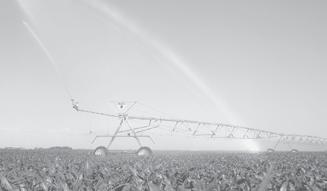

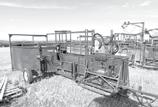
Hydraulic calf table with tub and alley, completely portable. ALSO, calving pens and loading chutes available. Call or Text Mike 605-842-6653


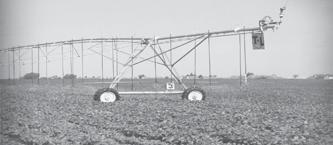

LODGEPOLE PRODUCTS, 307-742-6992, SERVING AGRIBUSINESSES SINCE 1975!! Treated posts, corral poles, buck-and-rail, western rail, fence stays, rough-sawn lumber, bedding. SEE US at www.lodgepoleproducts.com and click our “Picking A Fence Post” tab to see why folks choose our posts!! TFN
USED IRRIGATION PIVOTS FOR SALE, www.zimmag.
com Irrigation systems are COMPLETE with custom sprinkler package, SORTED, BUNDLED and ready to ship ● 2021 Zimmatic 8500 7 tower 1,297’ ● 2020 Zimmatic 8500 8 tower 1,296’ ● 2013 Valley 7000 7 tower 1,336’. Call 402-910-3236 6/7
APPROXIMATELY 1,200
FEET, 8” ALUMINUM GATED PIPE, with trailer and butterfly valves. ALSO HAVE 2 irrigation pumps, one with 10 HP motor. $3,600 OBO. Call 307575-1122 6/7
REPUTABLE FERTILIZER
BUSINESS FOR SALE!! BE YOUR OWN BOSS!! Currently operating in western Colorado, Rodman’s Custom Fertilizer Company is FOR SALE. Includes ALL EQUIPMENT needed and a LIST of CURRENT HAPPY CUSTOMERS!! Some training will be provided by a respected expert in the field of fertilization. This business is proven to make generous income within just a few short months of the year. Lots of room for expansion and more money to be made for someone with young energy and drive! Business and equipment available for purchase for $175,000. Entire home base, located in Paonia, CO, encompassing 5.47 acres, an expansive shop/storage facility and a modest home also available for a package price of $475,000. Address 40822 Stewart Mesa Rd., Paonia, CO 81428. Don’t let this opportunity slip by!! Contact listing brokers at Needlerock Mountain Realty and Land LLC. Liz Heidrick, 970-234-5344, liz. needlerock@gmail.com or Bree Pearce, 970-201-5705, bree.needlerock@gmail.com.
To view photos, go to www.wylr. net in the classifieds 6/7
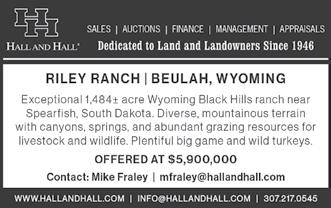
NEW MEXICO RANCH 209+ ACRES, 38 miles to Albuquerque, N.M. Incredible mountain views and your livestock from a 1,000 + sq. ft. deck. 2,843 sq. ft., 3 bed, 2 bath home. Two car carport, 2 car garage and RV bay. Pipe corrals, grow out pens, hay/ implement/livestock barns, horse/tack/tool, riding arena, round pen area, vet clinic. $1,450,000. First Class Realty Services, Susan Wilson qualifying broker/realtor 505-328-4172, contact Jay 505-263-7419. To view photos, go to www.wylr.net in the classifieds 6/7
CUSTOM-BUILT LOG HOME ON 40 ACRES NEAR FORT LARAMIE, WY, 1,352 sq. ft., 2 bedroom, 2 bath home. Beautifully set among trees and natural rock outcroppings. Stunning views, including Laramie Peak. Thirty acres fenced, ideal for horses or livestock. Horse shed included. For more details, visit www.ranchworldads.com under Horse Properties. Price, $475,000. Shown by appointment only. Call Neil, 260-413-0626 5/31
WE WILL PICK UP SCRAP
IRON: On-site processing and removal. Receive $$$ top dollar $$$ for your junk!! Call for details, Pacific Steel and Recycling, 307-234-6006. Casper/ Central Wyoming 5/17
LOOKING TO BUY ANTIQUE
COWBOY, INDIAN AND OLD WEST ITEMS: Saddles, spurs, bits, chaps, horsehair bridles and pre-1930 bead work. Willing to buy entire collections. Contact Matt at 308-637-3300 5/24
JOHN DEERE 2013 R450 WINDROWER, 16’ rotary head, good condition, $89,500. 2000 HESSTON 8450, 14’ head, stored inside, field ready. $28,500. 1960 JOHN DEERE 95 COMBINE, round back, 16’. All
The University of Wyoming’s Albany County Extension Office invites the public to a free event on June 7 from 9 a.m. to 3 p.m., where they will learn from guest speakers, enjoy a brown bag lunch and tour nearby fire sites.
Meant to enhance wildfire preparedness, the Firewise Education Event at Boulder Ridge in Laramie will provide landowners and community members with practical tools and strategies for reducing wildfire risks on their properties and improve knowledge of emergency planning.
Collaboration with the Wyoming State
Forestry Division and Albany County Emergency Management will ensure the workshop covers a wide range of perspectives and expertise.
With wildfire risks increasing in many regions, this event promises to equip participants with actionable knowledge to protect their homes and landscapes while fostering greater community resilience.
For more information or to RSVP, visit eventbrite.com/e/albany-county-firewiseeducation-event-tickets-1245451983409?aff =oddtdtcreator


by Lee Pitts
I’m worried about losing my occupation, and I have no pension or skills anyone is willing to pay for.
I’m also 73 years old, so my options are either bagging groceries or being a greeter at Walmart. But, I’m not a people person who can put on a smile and be pleasant for eight hours.
I’m too old to join the Army, and although I can stand around with six other guys and watch one guy dig a hole, the county is not currently hiring.
Because I’ve been a rancher, I guess one could say I’ve been in the food industry the last 50 years. Therefore, I’ve been checking for jobs in the industry, and I found McDonald’s is swapping out people with robots and the grocery store is replacing their checkers and baggers with self-help machines.
So, although I’ve never had to write a resume in my life because I’ve been self-employed for the last 50 years, I decided my writing time could best be spent polishing up a resume or job application just in case the bottom falls out of the market for syndicated columnists.
So here goes.
Name: Lee Pitts
Sex: Not that I can remember.
Marital Status: I have a black belt in marital arts.
Objective: I want an easy job where I can make
the most money with the least amount of work, and I want a big pension like my neighbor, the postman, who retired at age 55 with a full-benefits package and a good monthly income.
Desired salary: If the fire chief of Los Angeles was getting half a million a year, I deserve at least this much. I can stand around and watch homes burn just as well as she did.
Preferred position: I think I should either be the president of the company or be in charge of procurement because I like buying stuff. I’ve never worked in an office environment and don’t play well with others, so I haven’t developed any bad habits. My wife would probably like it if I was gone at least four days a week and my paycheck be automatically deposited into her account.
Education: I got a Bachelor of Science in Animal Science in three years at a school many have likely never heard of and another year studying in Australia, where I learned a third language. Now I speak English, Australian and a few words in Spanish, although judging by the response, I think they’re dirty words.
Work experience: I’ve picked lemons and avocados and been a roustabout in the oilfields. I’ve also been a cowboy, rancher, writer, ad pimp and a ring man at auctions. I’ve been a profes-
sor at a junior college for one year and dusted furniture in my grandpa’s furniture store.
Special skills: Typing and I’m a very good speller too. I’m also very good at shoveling crap. I can shear sheep, and I know how to castrate a ram lamb using my teeth. I’m skilled in the leather arts and can engrave silver. I was first chair alto saxophone in my high school marching band, I know how to do some great card tricks, I can juggle and I make a great peanut butter and jelly sandwich.
Communication skills: Don’t worry about me standing around smoking while staring at my phone because I don’t smoke and I don’t own a cell phone. I also hate talking on the phone, so I don’t think my skills would be best put to use in a call center in India to irritate people every day for eight hours. Besides, I don’t think my wife wants to relocate to a third world outpost.
Notable achievements: I was selfemployed employee of the year for 40 years, and I’m an organ donor.
Reason for leaving last job: I got in a fist fight with a fellow employee. I lost my job, but the fight ended in a draw.
References: Fortunately, all of the people I worked for are now dead, but I give you my permission to talk to them about me.
Availability: Like Billy the Kid, there is only one known photo of me, and I’m not available to be interviewed on a Zoom call, whatever that is. I am willing to pee in a jar for a drug test. I certify almost all of the above is mostly true.

record $222.52 per hundredweight (cwt), a $35 increase from a year ago and up $20 per cwt since the beginning of the year.
Maples further notes the CME June Live Cattle futures contract closed around $213 per cwt on May 5, while Schmitt points out, due to tight feeder cattle supplies and a surge in fed cattle prices, the CME Feeder Cattle Index also reached new heights, topping $296 on the same day.
During the second week of May, fed cash cattle again saw record high prices.
According to Commodity Futures Broker and Livestock Agent Trey Freeman, cattle in the South traded at $218 to $220 per cwt, a steady two dollars higher than the previous week, while cattle in the North traded $225 to $228 per cwt, which was three to six dollars higher than the week before.
Freeman also notes dressed trade in the North was five to $10 dollars higher, at $355 to $360 per cwt.
“Futures responded to those new record-high cash prices with new record highs of their own,” Freeman says in a May 14 BEEF Magazine article. “June live cattle finished up $3.57 for the week at $202.05 per cwt.”
“Feeder cattle futures finished $3.02 to $3.55 per cwt higher on the week, with the largest gains in the late summer and fall months,” he con-
tinues. “August feeder cattle managed two consecutive closes over $300 per cwt to end the week.”
Beef demand continues to grow
Despite a decline in exports due to tariff and trade war issues, experts note strong domestic demand –especially as summer grill ing season ramps up – has kept inventories tight, and consumers have proved to be willing spenders for purchas ing beef as prices continue to rise to new records.
However, Freeman points out a slow slaughter pace and gain in boxed beef value will determine beef demand in the summer months ahead.
“If sharply lower kills persist, the pace at which boxed beef prices advance will provide a good litmus test of what to expect for beef demand in the months ahead,” he states. “A lethargic advance into June would sug gest consumers aren’t as will ing to open their wallets at the beef counter. This might sig nal high retail prices are no longer sustainable.”
“A rapid advance would suggest, outside of the broader economic fallout, the threat of a steep downturn in beef demand is less severe than many currently perceive, potentially opening the door to even higher retail prices,” he continues.
Freeman also notes the all-fresh beef retail price has
typically peaked late in the third quarter or into the fourth quarter over the past two years. According to the U.S. Department of Agriculture’s latest data, released in March, all-fresh beef retail prices were reported at $88.42 per pound, up 54 cents from a
year ago and $1.19 higher than in 2023.
Beef exports, however, declined by 654 metric tons (mt) from the week prior, a decline of four percent or 1,119 mt.
U.S. beef exports are 17,720 mt lower year-to-date,

representing a six percent decrease.
Freeman goes on to report, over the past six weeks, exports to China have declined significantly due to the trade war – down 8,716 mt from the same time last year.
On the other hand,
exports to Korea were up 8,994 mt for the same timeframe, while a weak U.S. dollar is affecting trade in Japan. Hannah Bugas is the managing editor of the Wyoming Livestock Roundup. Send comments on this article to roundup@wylr.net.

Wyoming Stock Growers Association You can also register online at WWW.WYSGA.ORG or by calling the office at 307-638-3942

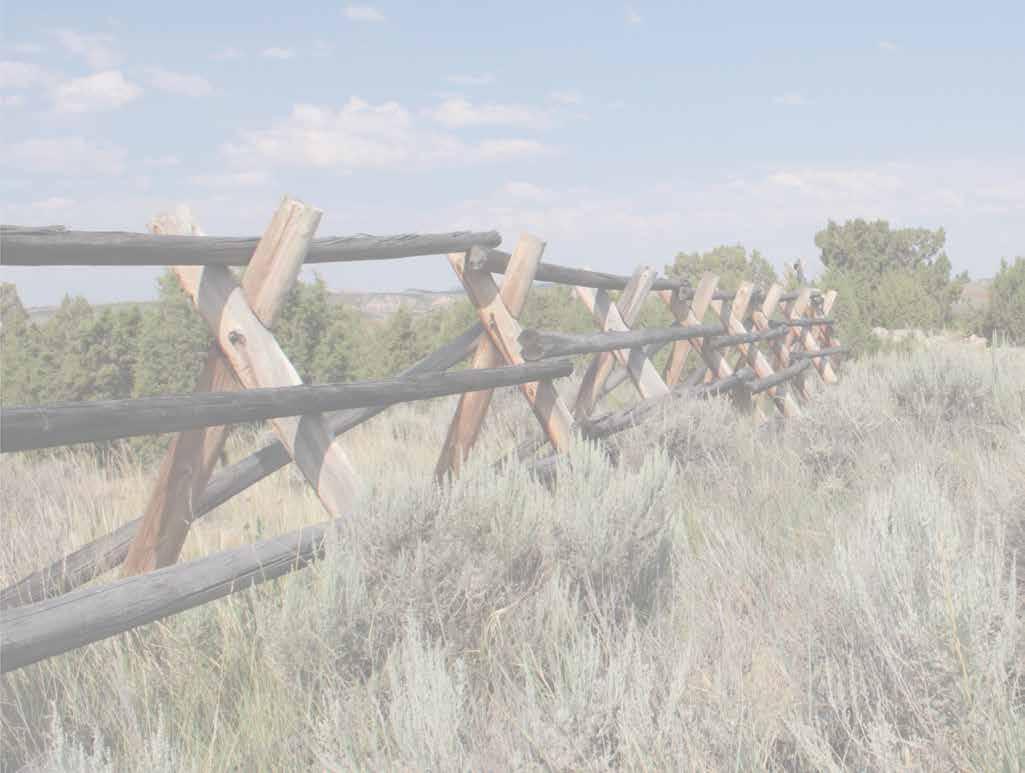
The University of Wyoming Extension is proud to offer Rancher’$ EDGE (Excellence in Development, Grazing, and Economics) — a multi-season learning experience that gives ranchers the tools they need to improve their operations. Each session combines classroom learning with hands-on activities, ensuring you gain both knowledge and real-world skills.
Topics include:
Risk management – Learn how to handle unpredictable markets and weather.
Livestock nutrition & ration balancing –Improve herd health and efficiency.
Marketing strategies – Develop a plan to maximize profits.
Grazing management – Optimize your land for long-term success.
Who should attend?
This program is for ranchers, family members, and employees actively involved in the management and care of a ranching operation. This is also an opportunity to network with other ranchers and industry professionals.
Dates and Locations:
• Thermopolis: June 24-25, 2025
• Laramie: November 18-19, 2025
Space is Limited! Sign Up Today!
Registration is $250 per person for each session, which includes materials, snacks, and dinner with presenters. Participants cover their own lodging and travel.


BASF, the world’s largest chemical producer, headquartered in Ludwigshafen, Germany, announced the release of 19 new soybean varieties, available just in time for the 2025 growing season.
With these new additions, BASF’s Xitavo soybean seed portfolio now includes a total of 46 unique products.
“For the 2025 growing season, growers will have more offerings with access to new genetics developed and sold exclusively by BASF in its Xitavo soybean seed portfolio,” the company states in a press release dated July 9, 2024.
“Previously, four companies comprised 98 percent of the soybean breeding effort for the U.S. market.
BASF is now bringing new and unique germplasm to the market, and with it, a new source of soybean varieties to meet farmer’s ever-changing needs.”
BASF notes these new varieties will feature characteristics to help enhance yields, reduce climate challenge risks and mitigate increasing disease pressure.
“BASF is committed to helping farmers doing the biggest job on Earth, and we are thrilled to show this commitment through soybean germplasm breeding in the U.S.,” says Marc Hoobler, U.S. soybean agronomy lead for BASF. “We are not just launching new products, but a whole
new pool of elite genetics farmers have not had access to until now.”
Product highlights In a Farm Progress article by Midwest Crops Editor Tom Bechman, Bill Backhaus, a Midwest agronomist for BASF, outlined a few key points about the company’s new introductions.
First, he notes all 19 varieties are Enlist E3 varieties, meaning they can be sprayed with glufosinate, glyphosate and 2-4,D choline over the top, and relative maturity of the new products range from 0.0 to 4.8.
Backhaus also says some of the new varieties carry Peking resistance for soybean cyst nematode (SCN), while others carry SCN resistance genes from the PI88788 breeding line.
A few varieties highlighted by Hoobler include XO 2625E, a variety with good tolerance to white mold, iron deficiency chlorosis and good standability; XO 2865E, a solid combination of offensive and defensive characteristics featuring a Rps1c phytophthora source with excellent standability, and XO 3105E, which features above-average tolerance to iron deficiency chlorosis, phytophthora and sudden death syndrome and “packs a yield punch,” with an average yield performance at 102.7 percent of the test mean.
Hoobler also mentions
For more information on BASF and the 19 new varieties added to its Xitavo soybean seed portfolio, visit basf.com.
XO 3375E, a variety proving strong yields from east to west at 102.5 percent of the test mean, coupled with excellent standability and good tolerance to phytophthora and sudden death syndrome, and XO 3855E, a variety featuring a combination of characteristics including sulfonylurea-tolerant soybeans, excluder, strong standability and solid disease tolerance, with a yield performance at 102.4 percent of the test mean.
Selecting varieties
According to Backhaus, Xitavo soybean seeds are sold through an extensive retailer network, and BASF encourages growers to select varieties that best fit their fields and environmental conditions.
This includes accounting for row width, seeding rate preference and tillage type.
“Top yields start with seed selection,” Backhaus says. “We emphasize the yield triangle, made up of genetics on the base and environment and management on the two legs. Genetics is first and foremost. Studies show 19.8 bushels of yield variation depending upon which variety is chose.”
Backhaus further notes
BASF uses the variety profile index (VPI) to classify their new products.
“Our plant breeders are beginning to utilize it, and it helps customers get the best-suited variety into each field,” he explains.
So far, varieties are classified as high, medium or low VPI.
Backhaus explains low VPI varieties focus on one primary stem, do not branch easily and “build yield by packing in more nodes per plant and more pods per node,” whereas high VPI varieties grow a lot of branches and produce top yields, if they have adequate moisture.
Midrange VPI varieties fall somewhere in the middle, branching more easily than low VPI varieties but not as much as the high VPI ones.
“There is much more to this than just identifying a bushy versus non-bushy bean. When agronomists and farmers work together, this system helps them make really good variety placement choices,” Backhaus concludes.
Hannah Bugas is the managing editor of the Wyoming Livestock Roundup. Send comments on this article to roundup@ wylr.net.
Each year, to showcase their understanding and appreciation of Wyoming’s essential resources, second- through fifthgrade students from across the state create bookmarks illustrating a Wyoming resource message through Wyoming Agriculture in the Classroom’s Bookmark and Beyond Program.
This year, 12 winning designs were printed and distributed throughout the state.
For coming weeks, the Roundup will share photos of the 2025 Bookmark and Beyond finalists.
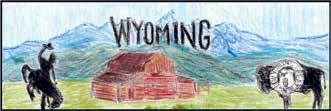

The Bureau of Land Management (BLM) is holding a 30-day public comment period on the environmental assessment (EA) for the proposed Miller Mountain land exchange. If the exchange is approved, BLM would transfer about 1,802 acres of federal land currently only accessible by private lands to Fort Hill LLC in exchange for 2,275 acres of private land which offers key public access points and significant conservation value.
During the comment period, BLM seeks to gather feedback on potential impacts, benefits and considerations associated with the exchange.
The EA, maps and additional details are available at the BLM National NEPA Register, where interested parties can submit written comments via the “Participate Now” option. Comments may also be delivered to Attn: Miller Mtn. Land Exchange, BLM Pinedale Field Office, PO Box 768, Pinedale, WY 82941.
The public comment period will close on June 11. For more information, contact BLM Supervisory Natural Resource Specialist Travis Chewning at 307-367-5333 or tchewning@blm.gov.
TUESDAY, JULY 8